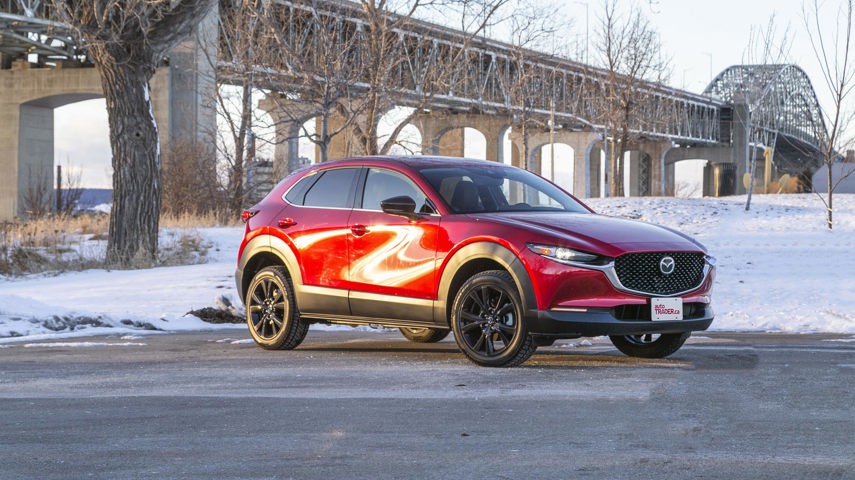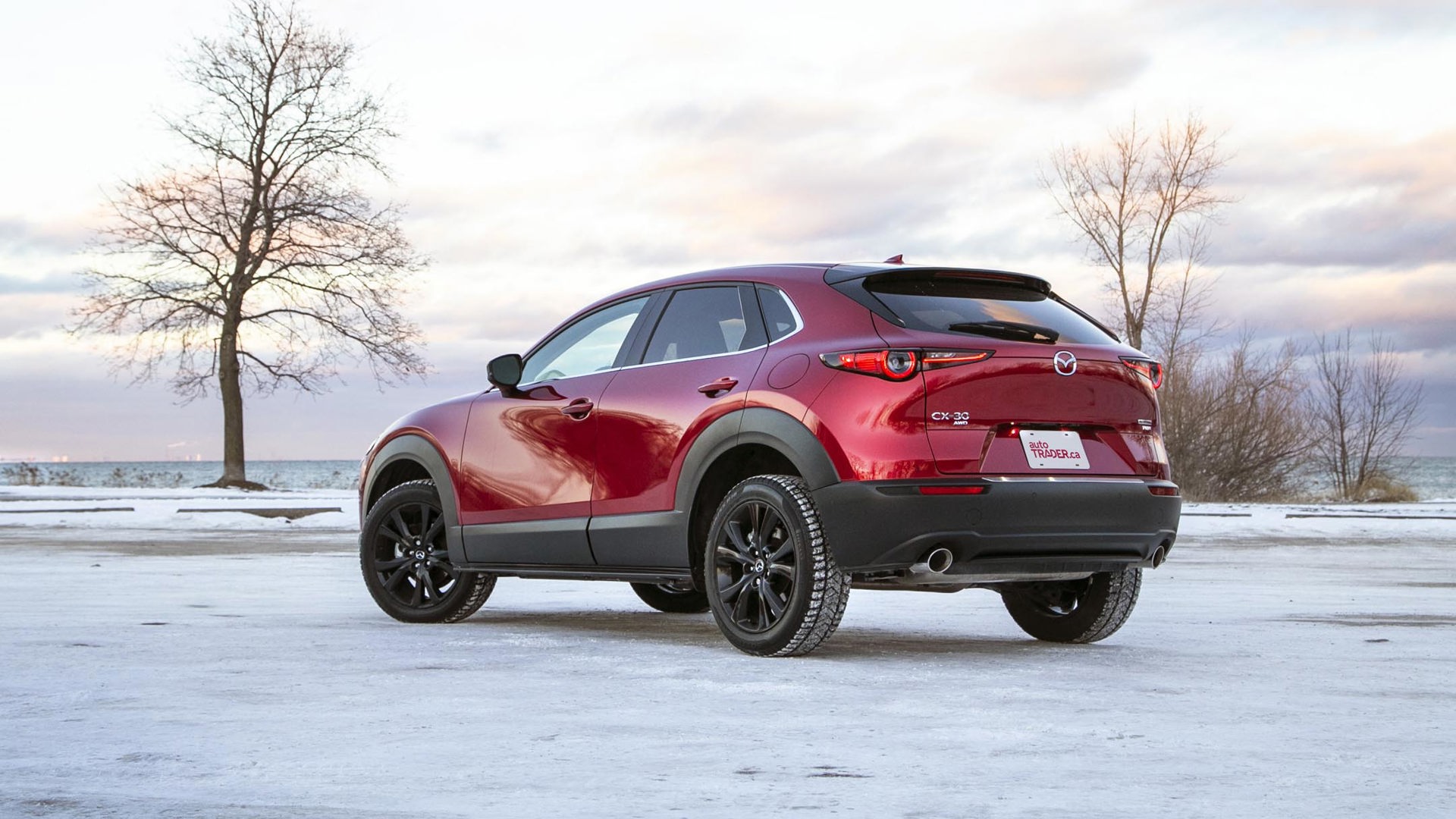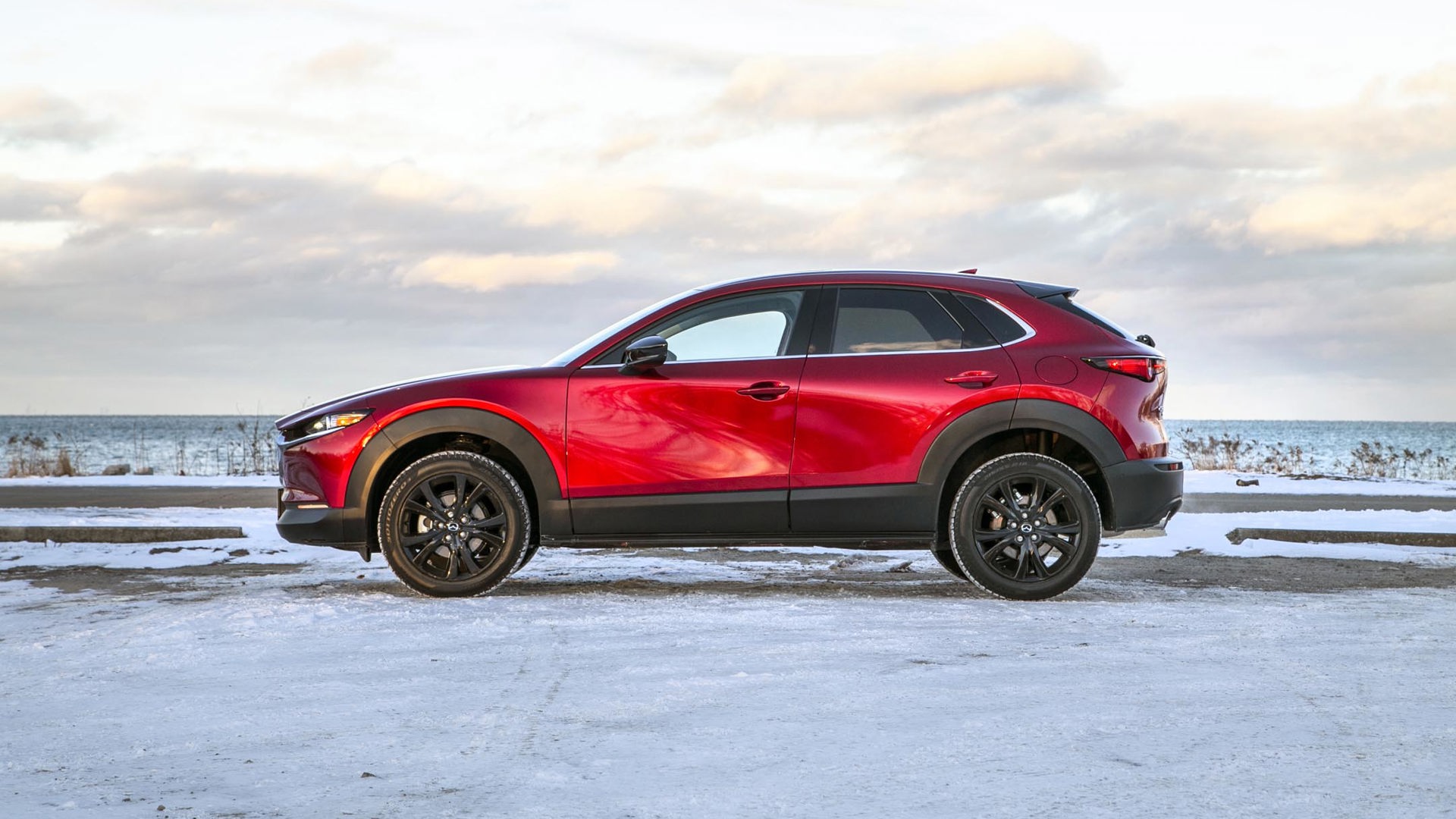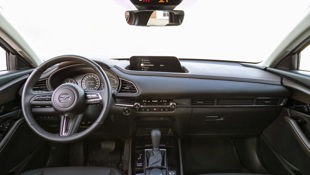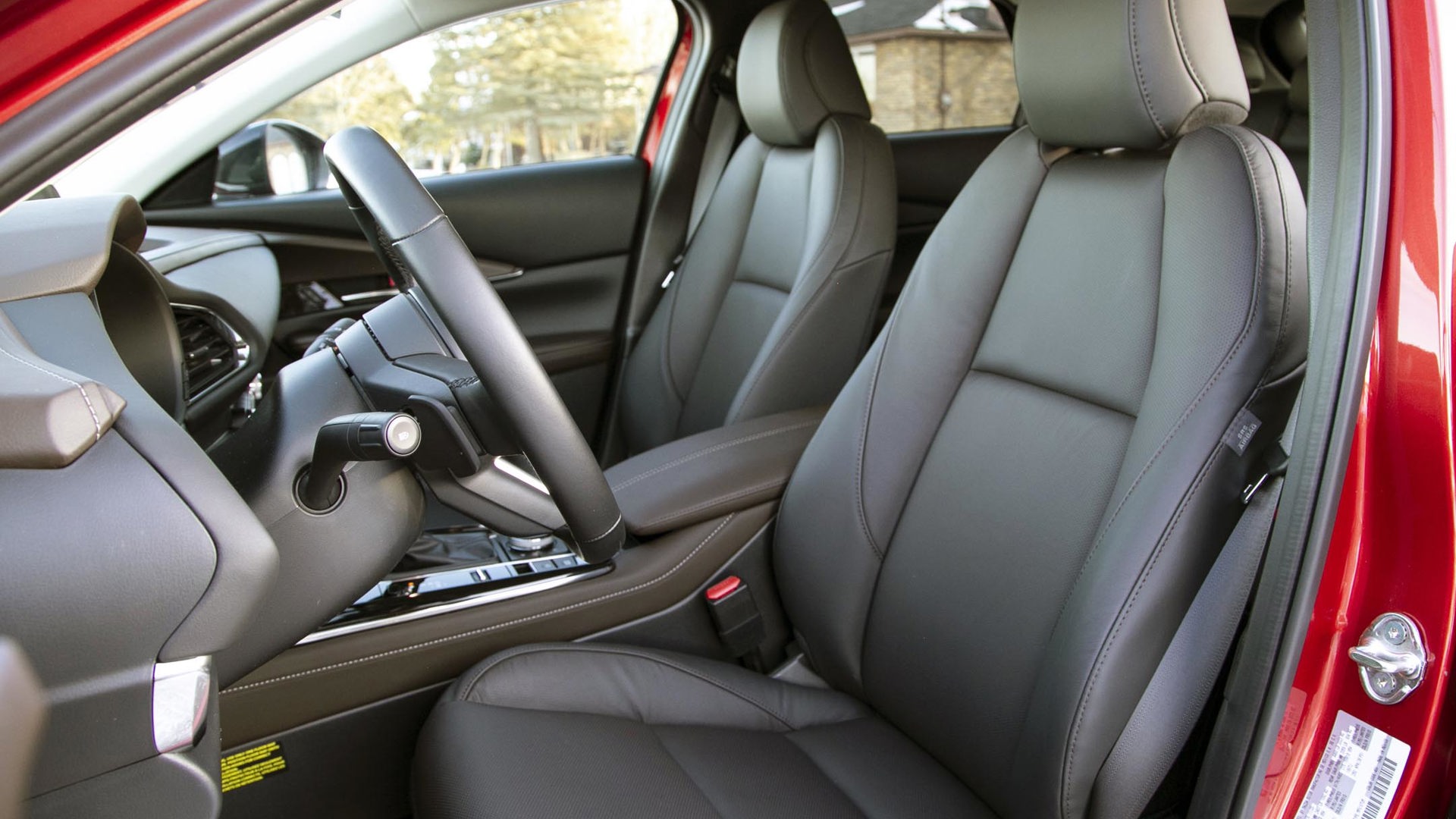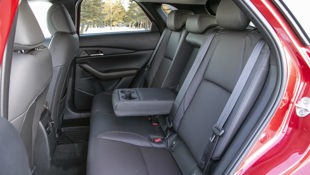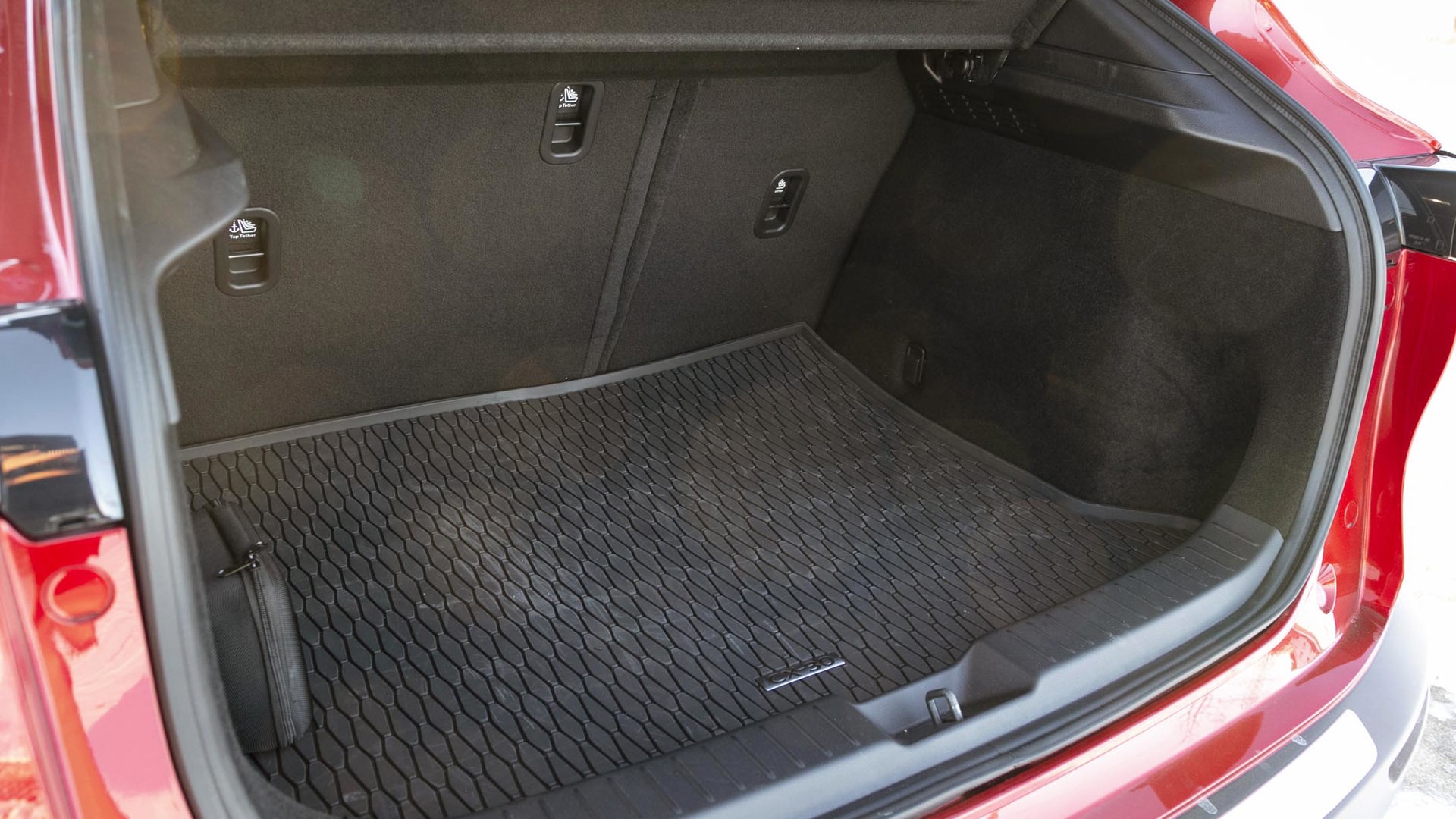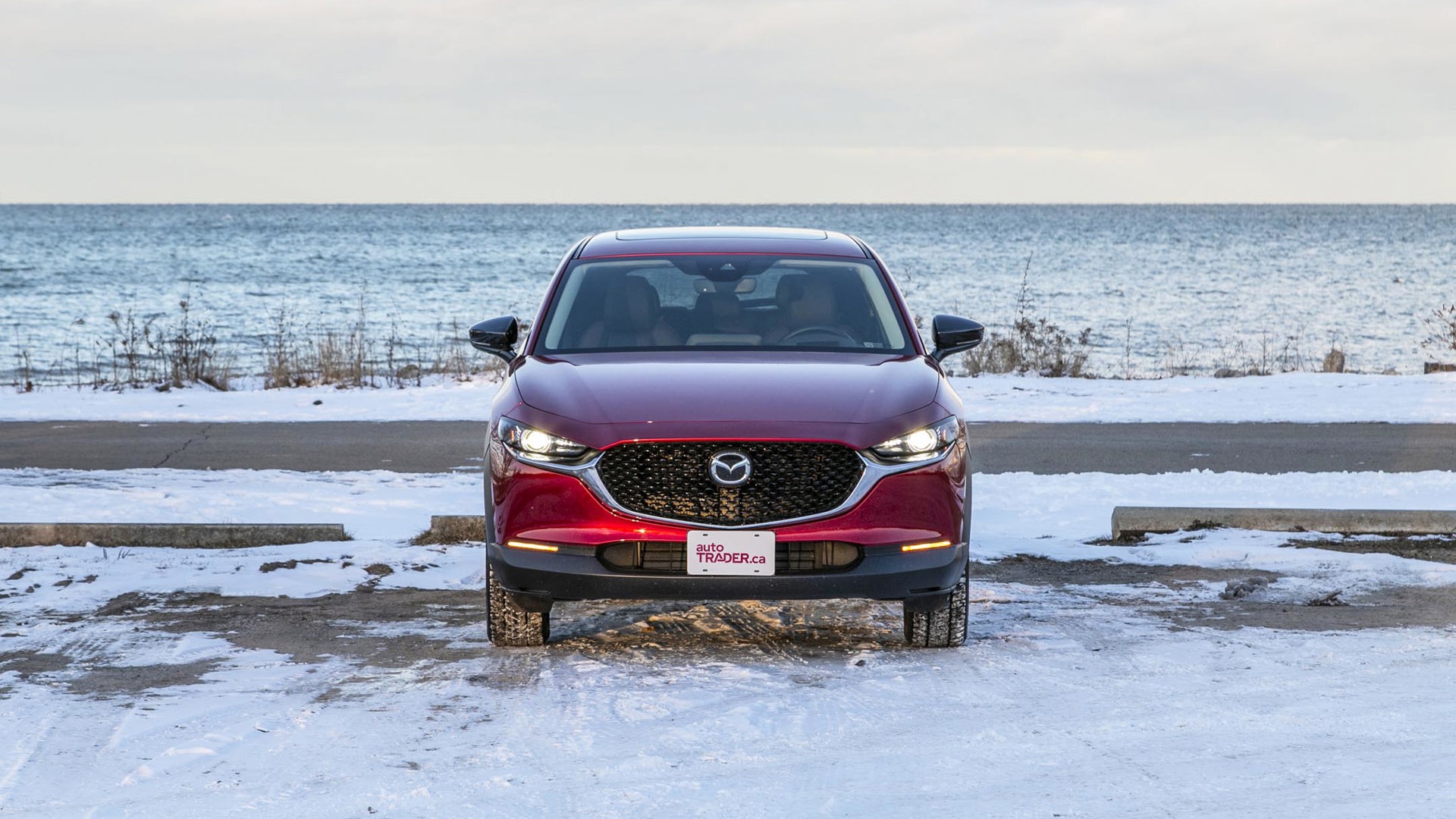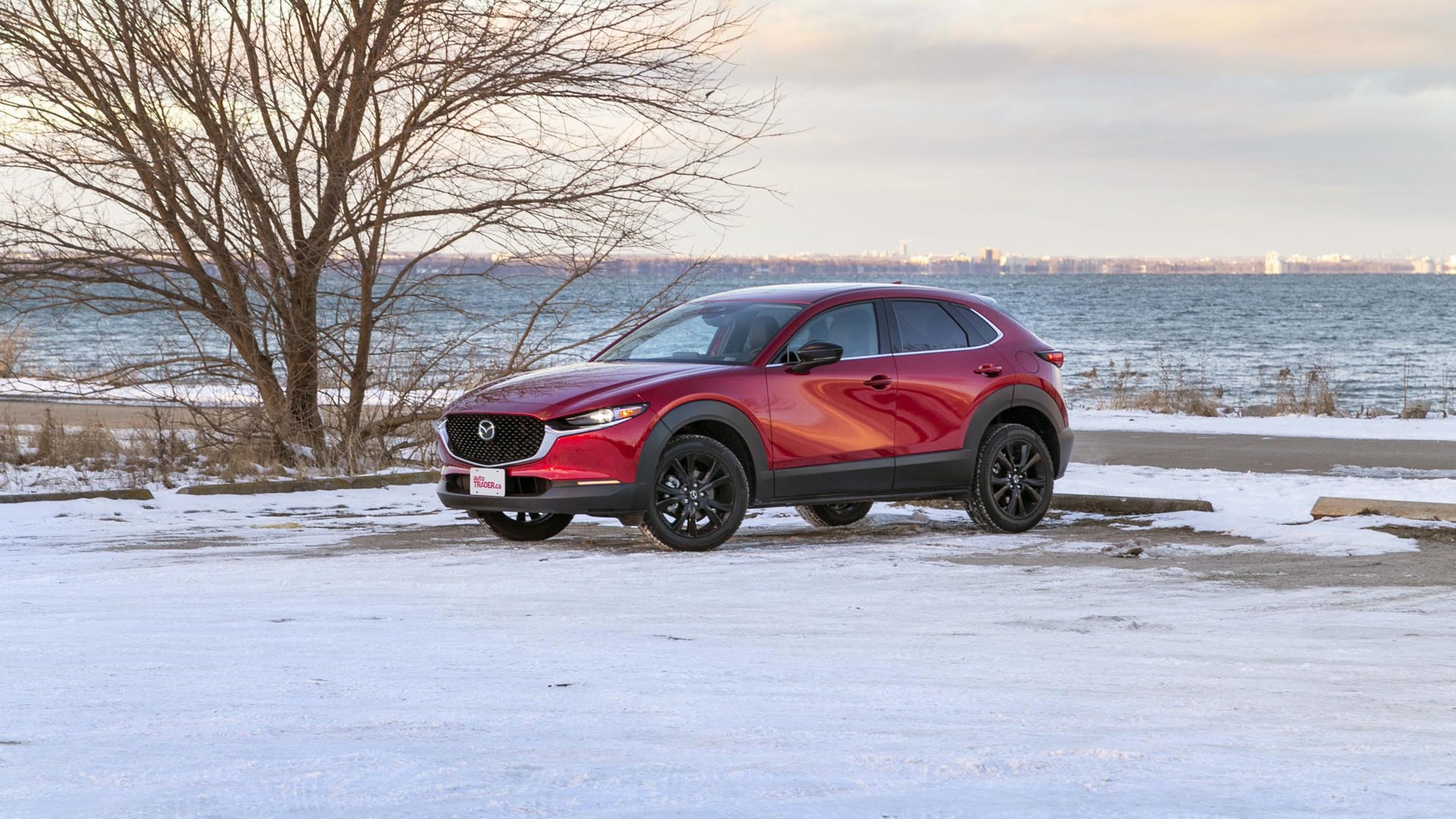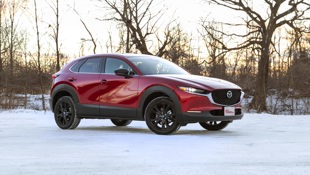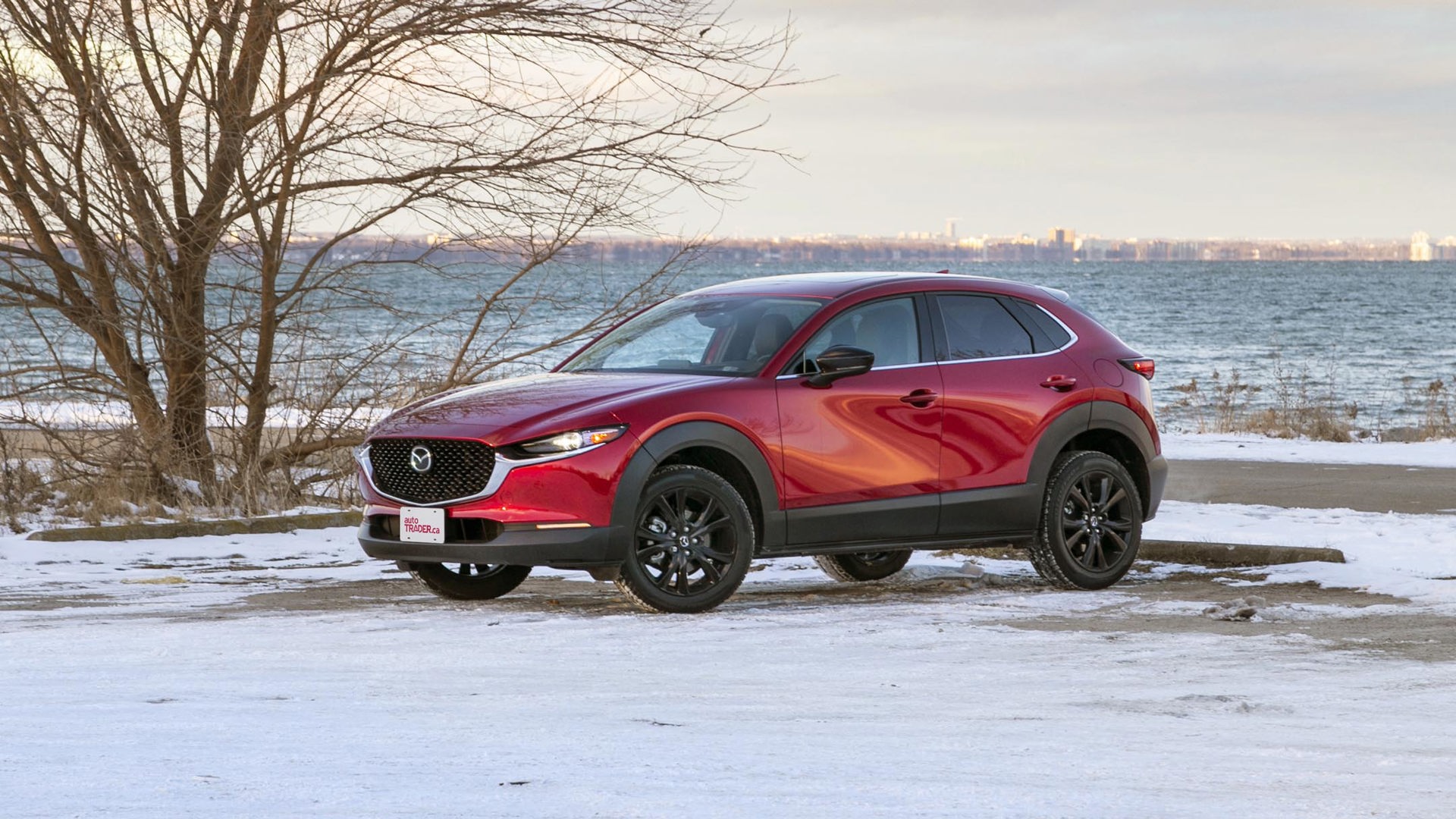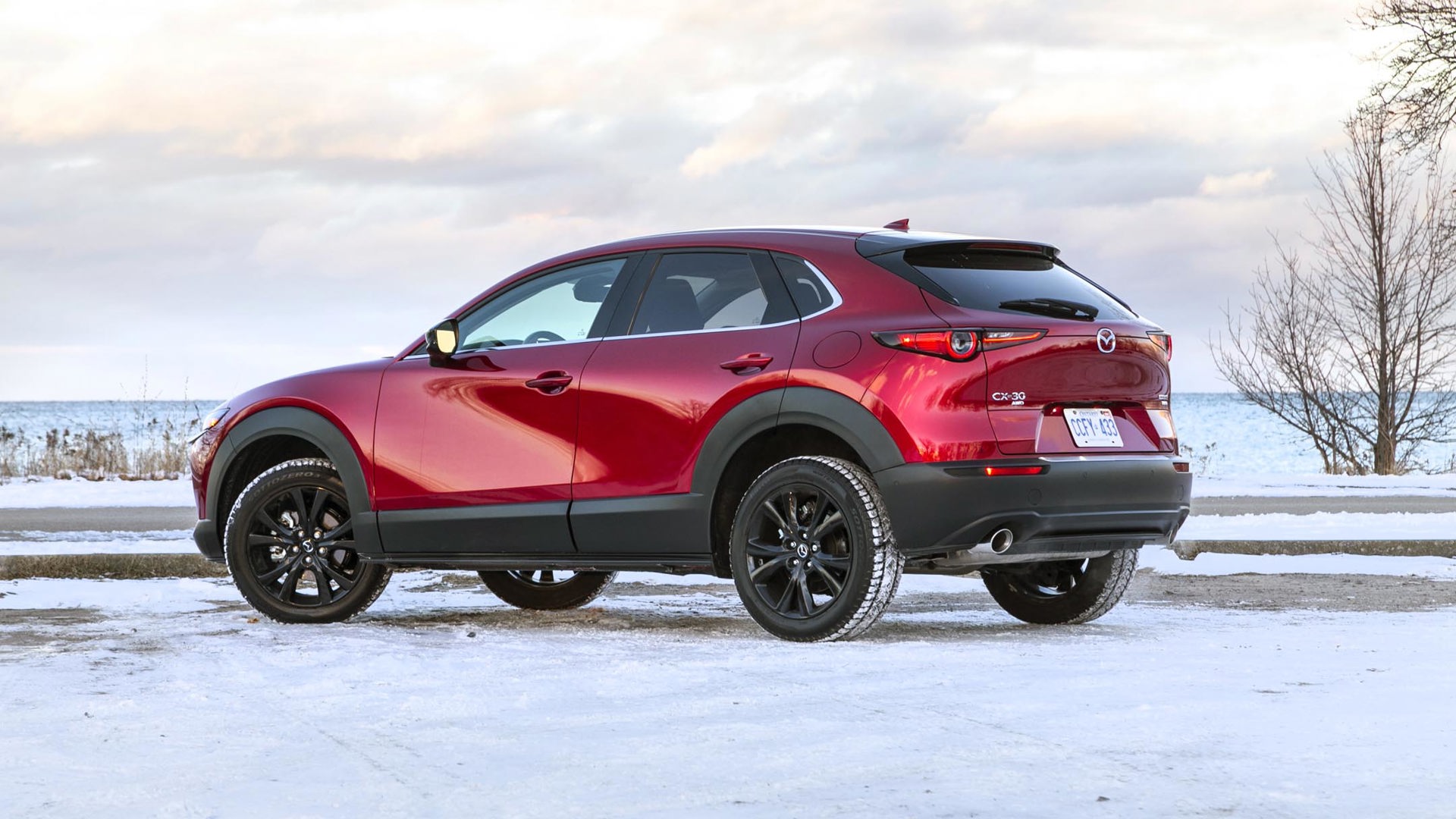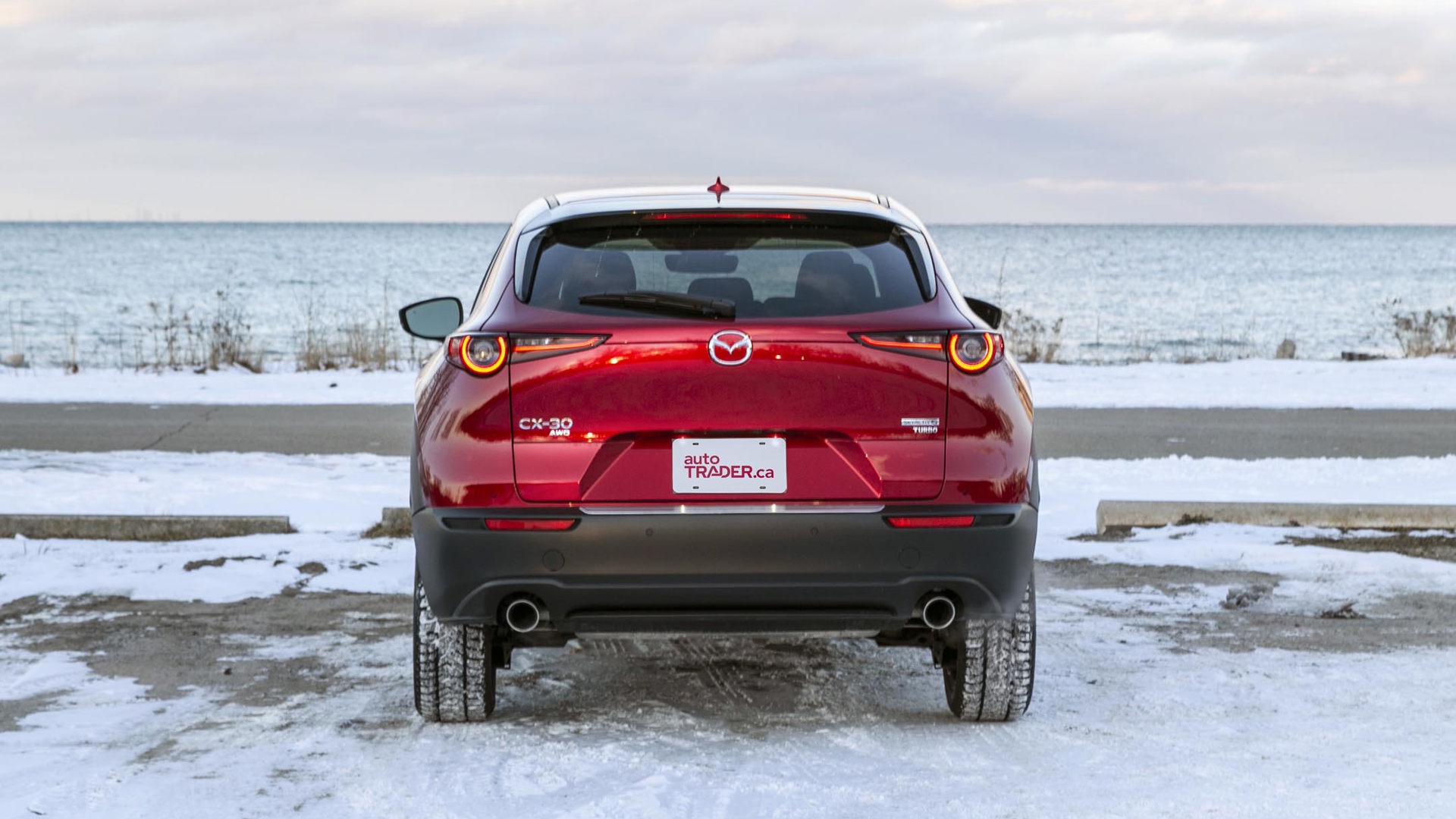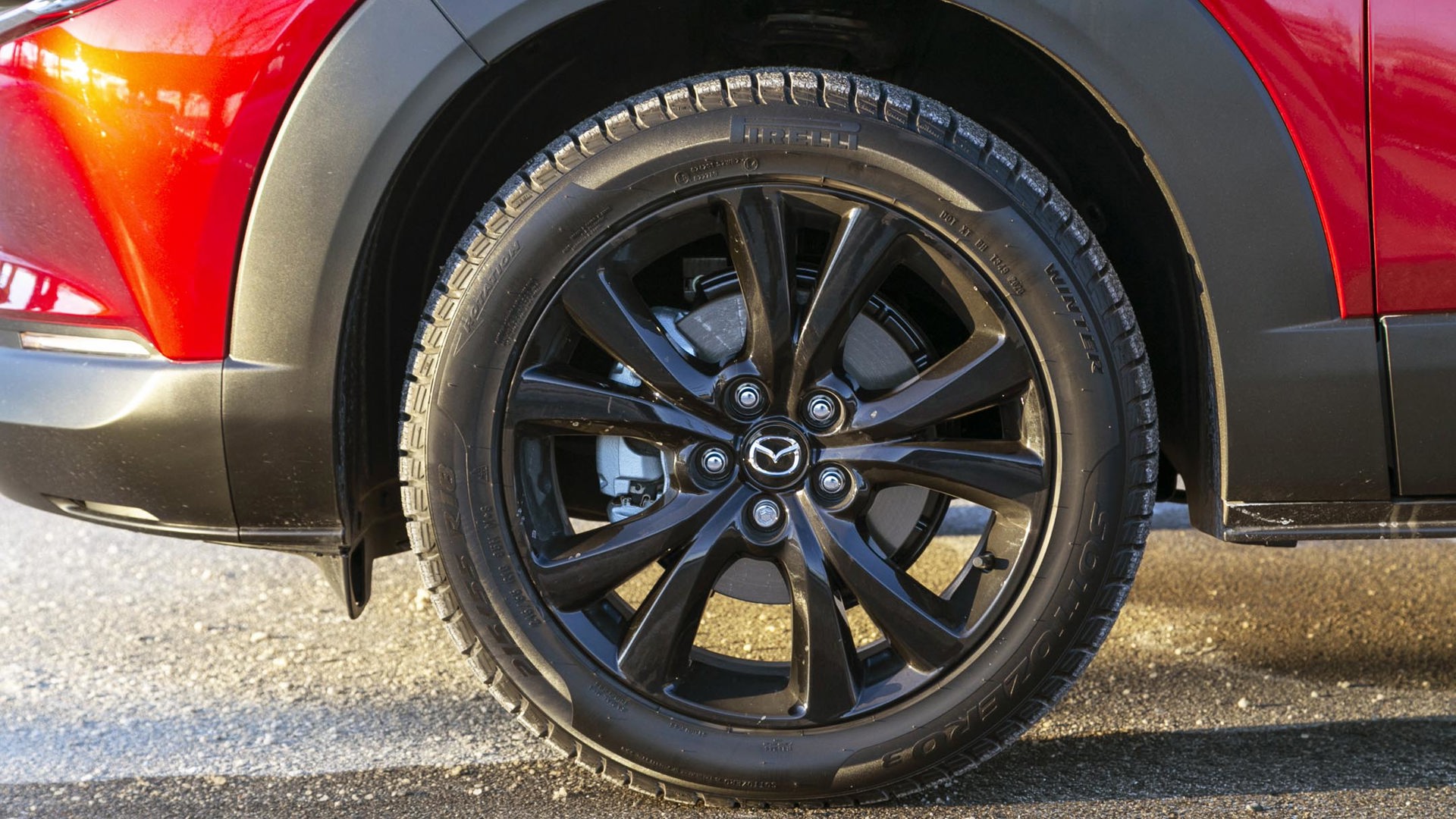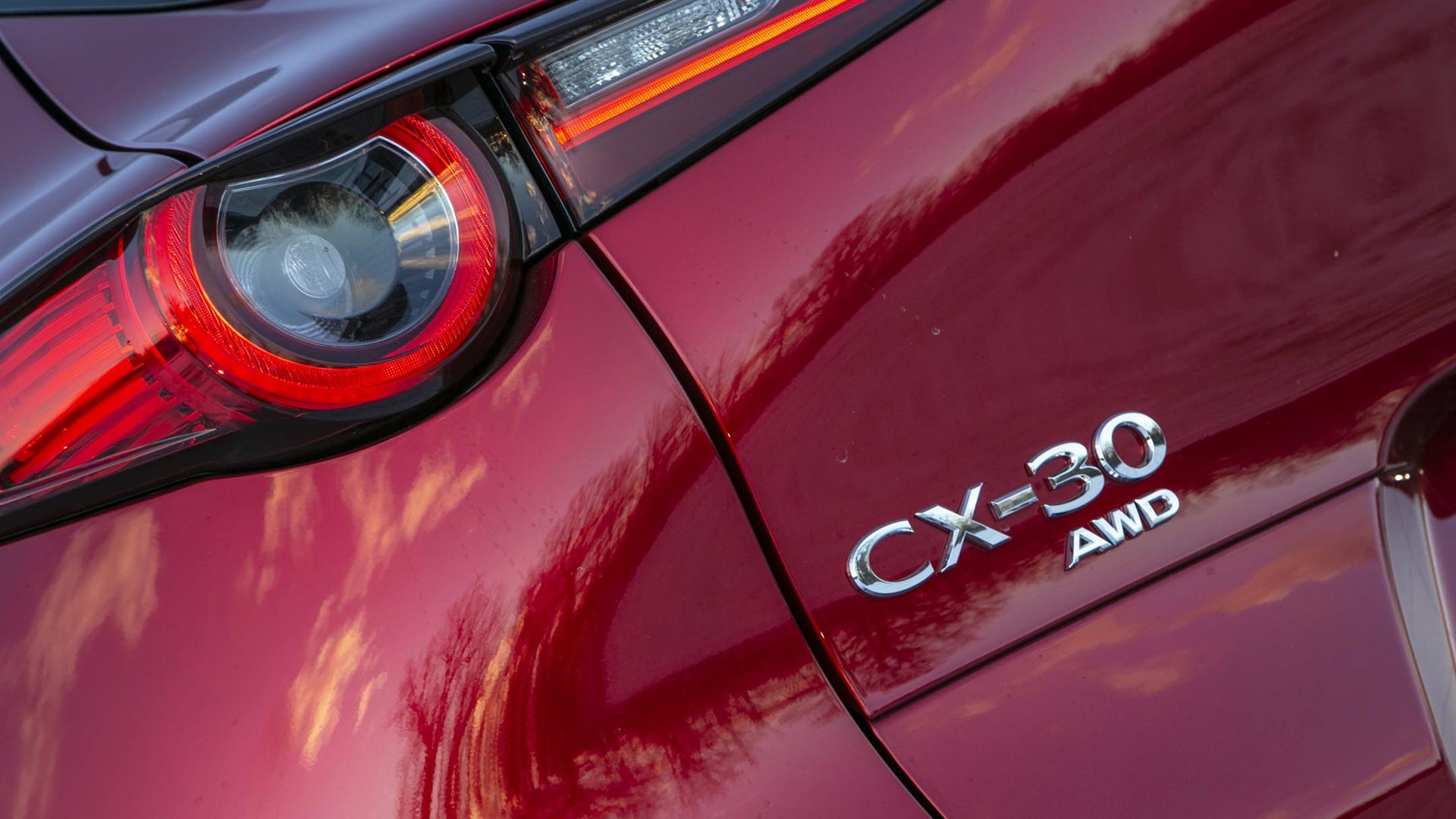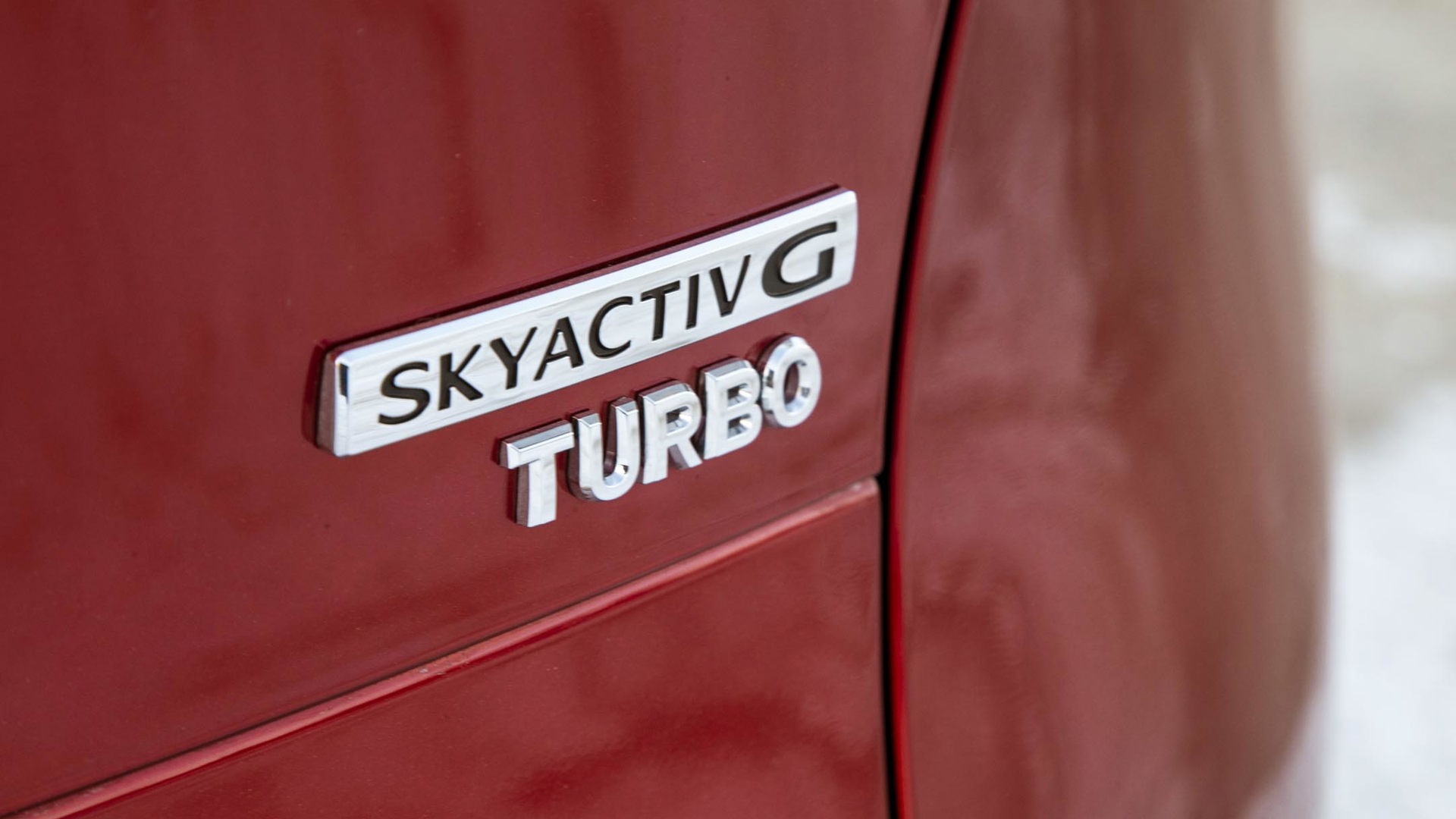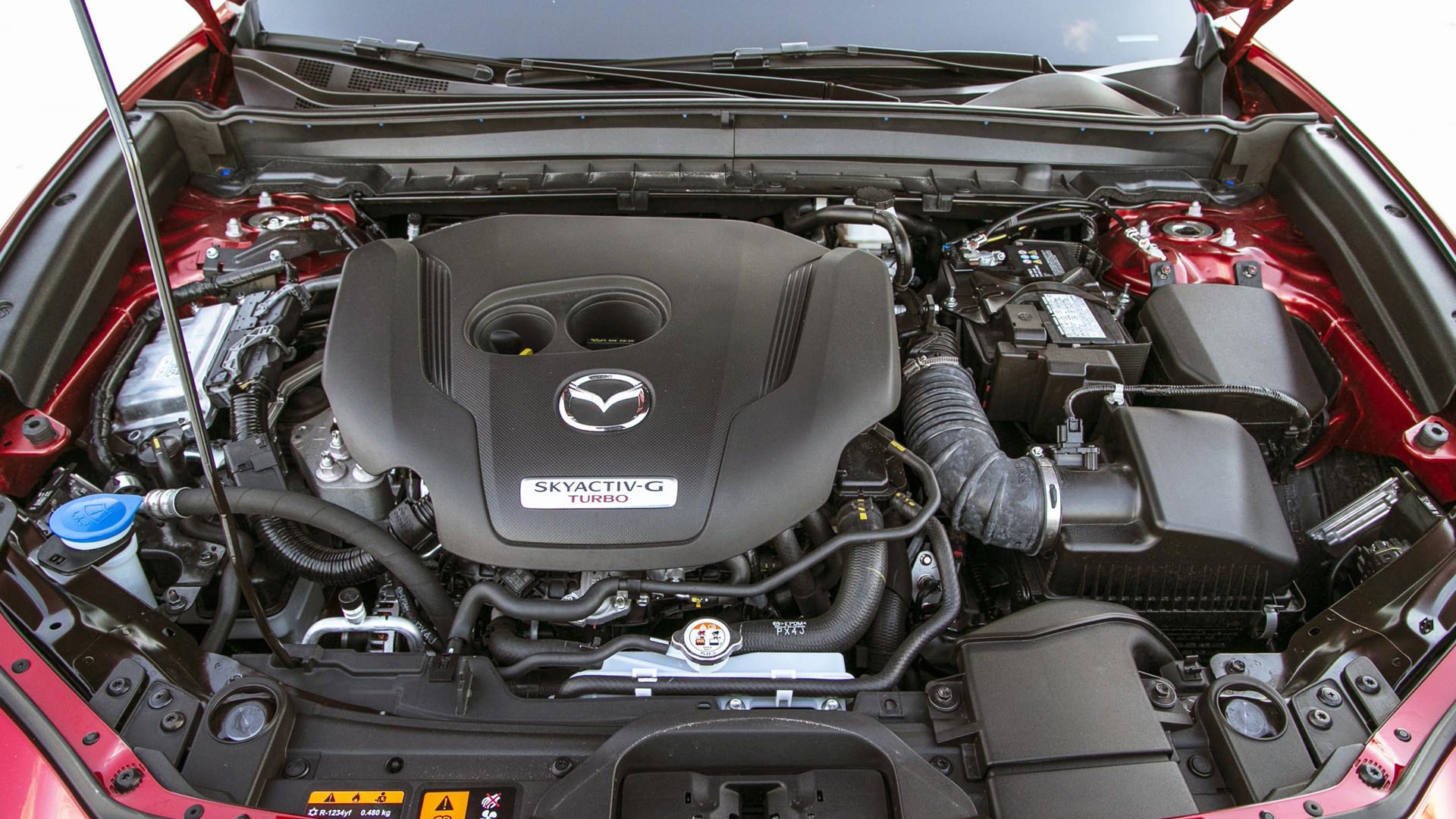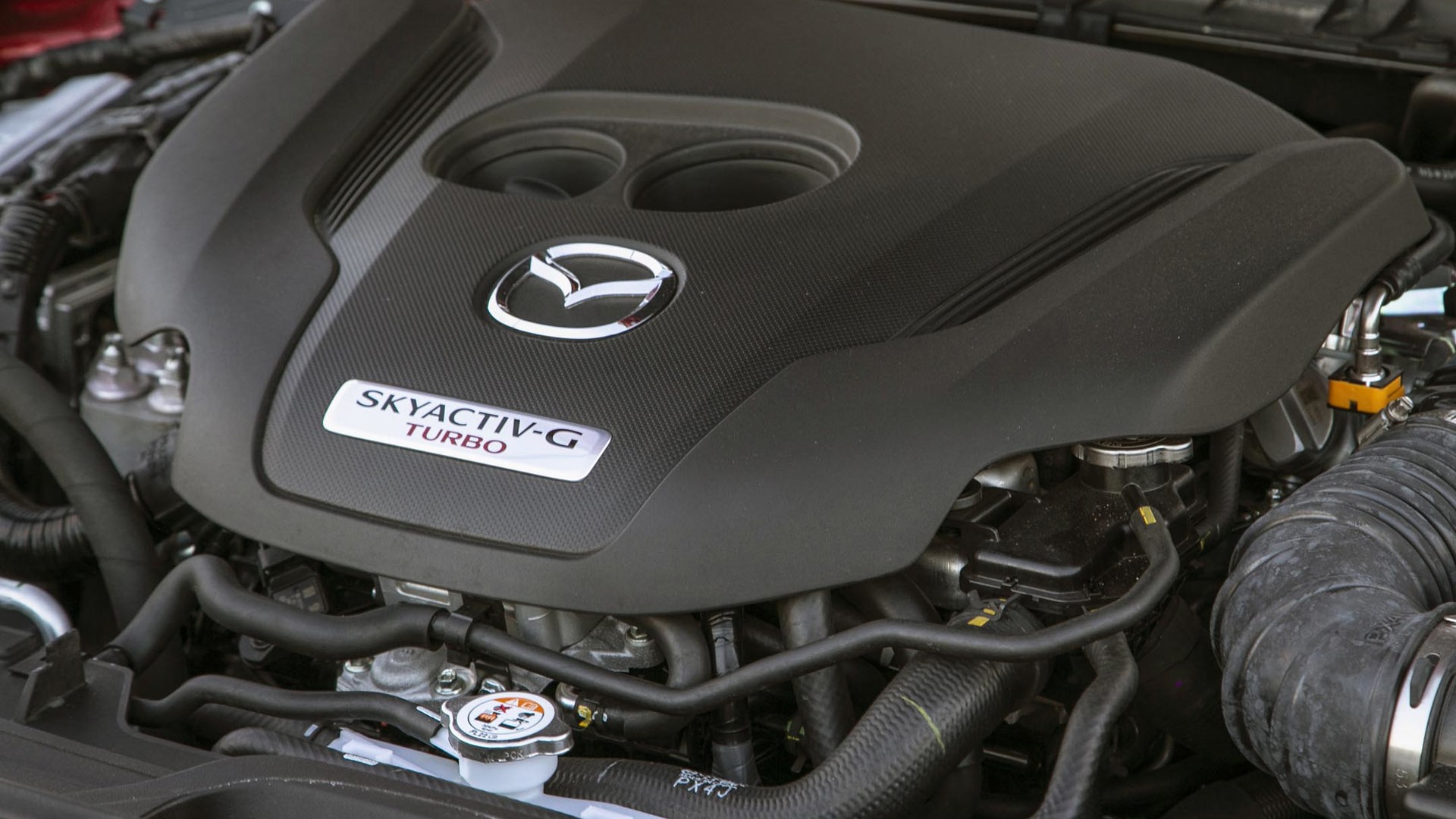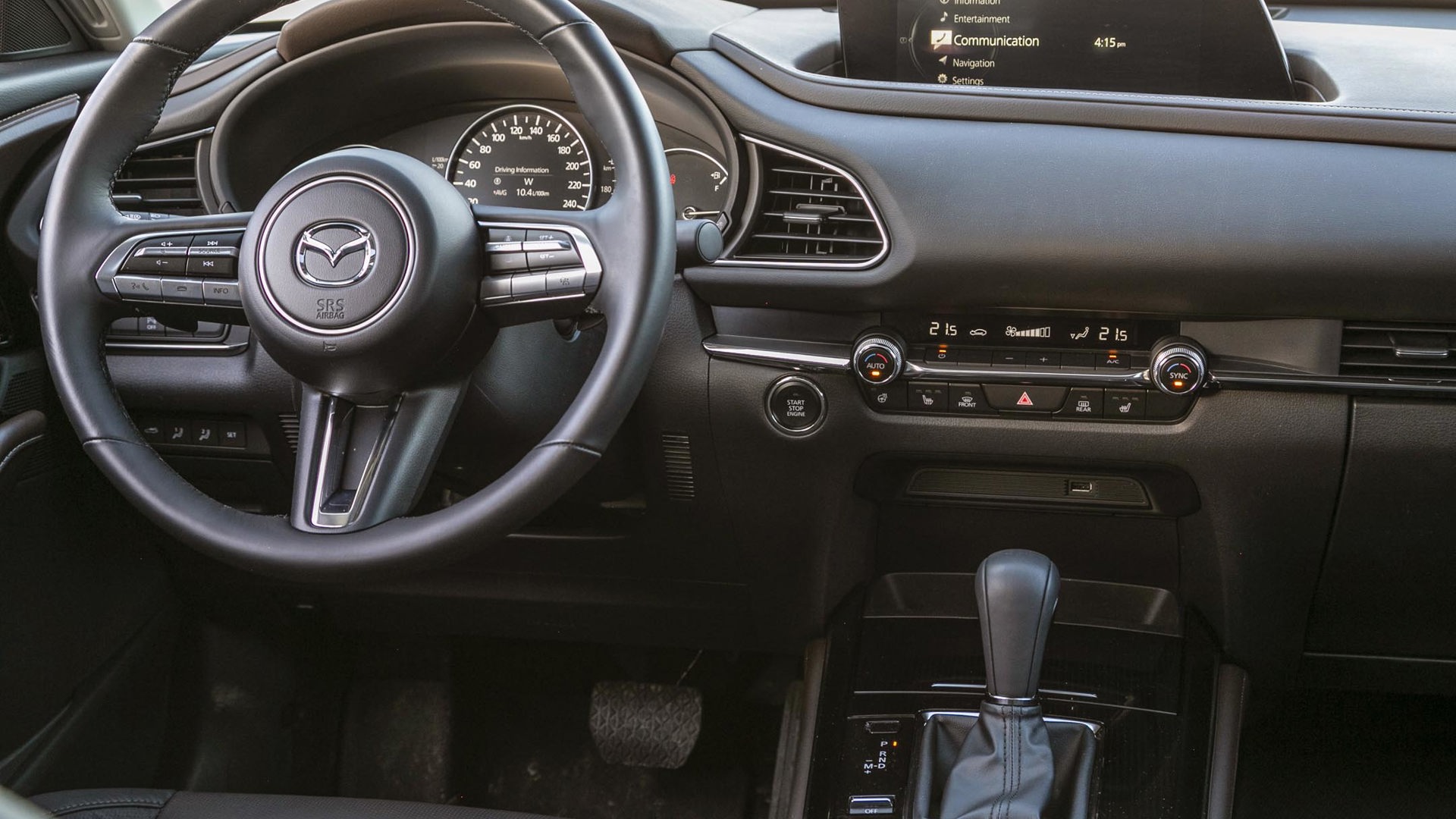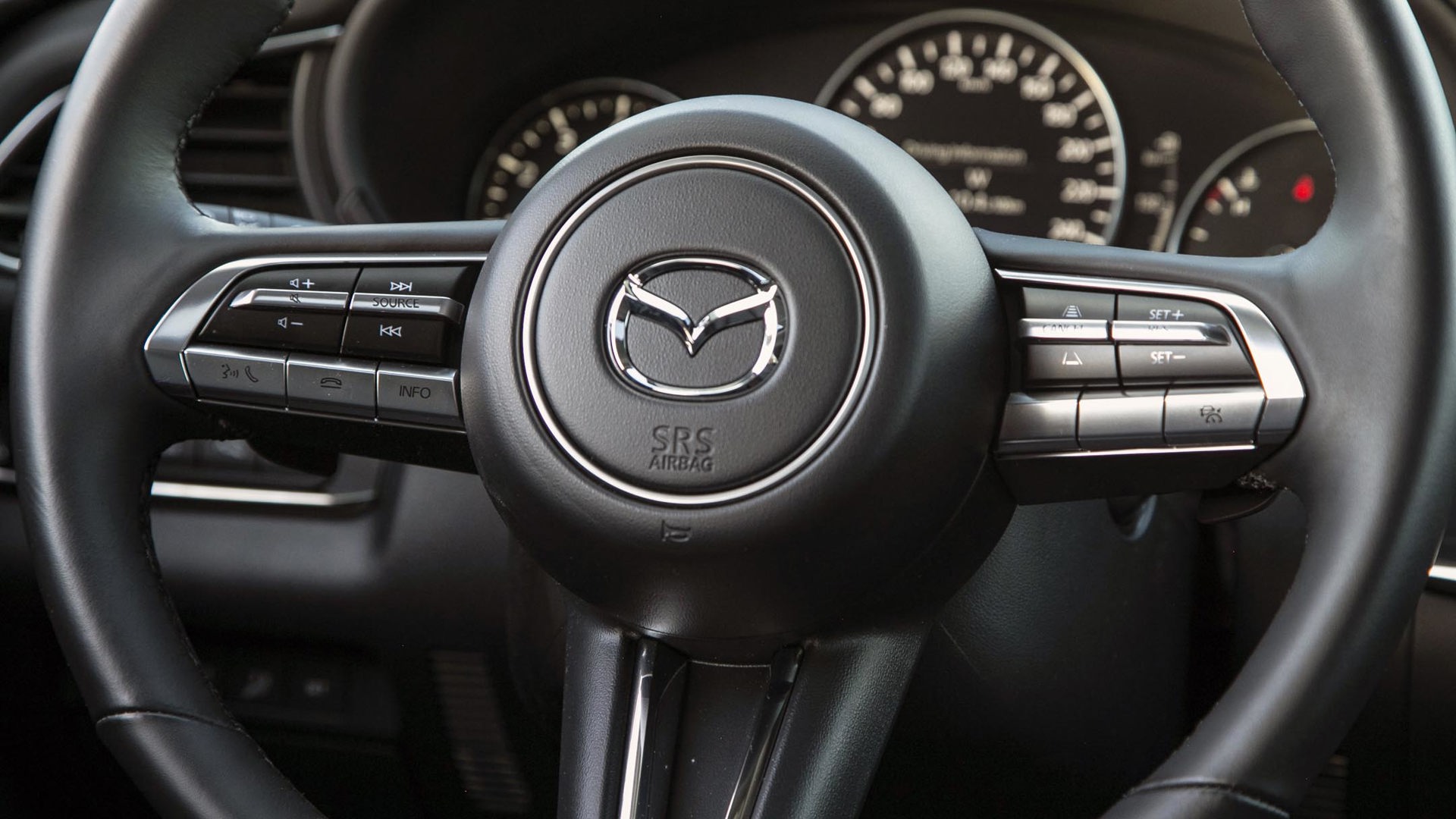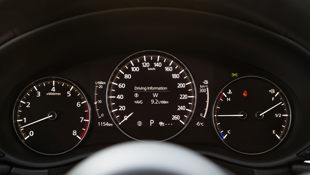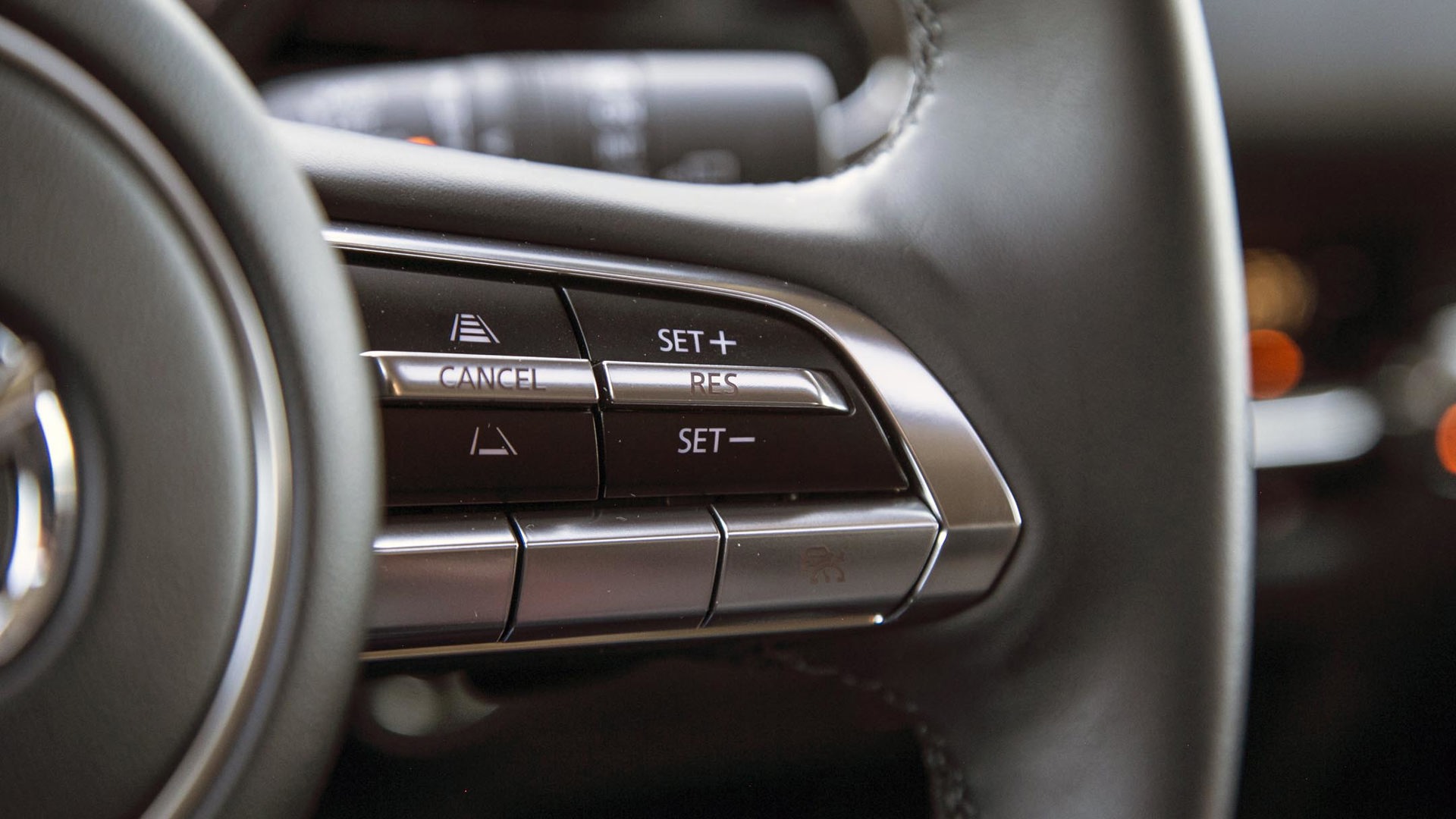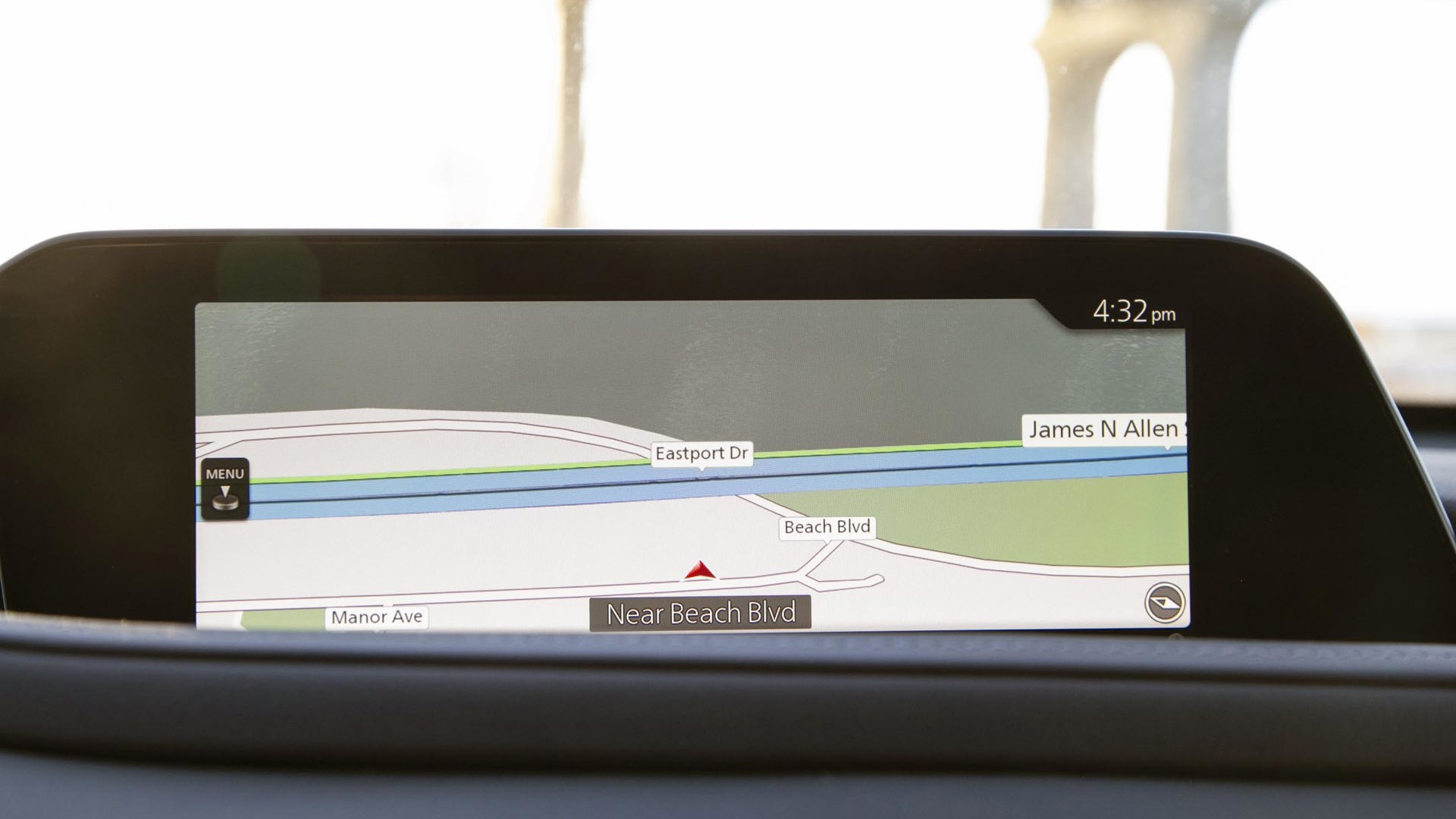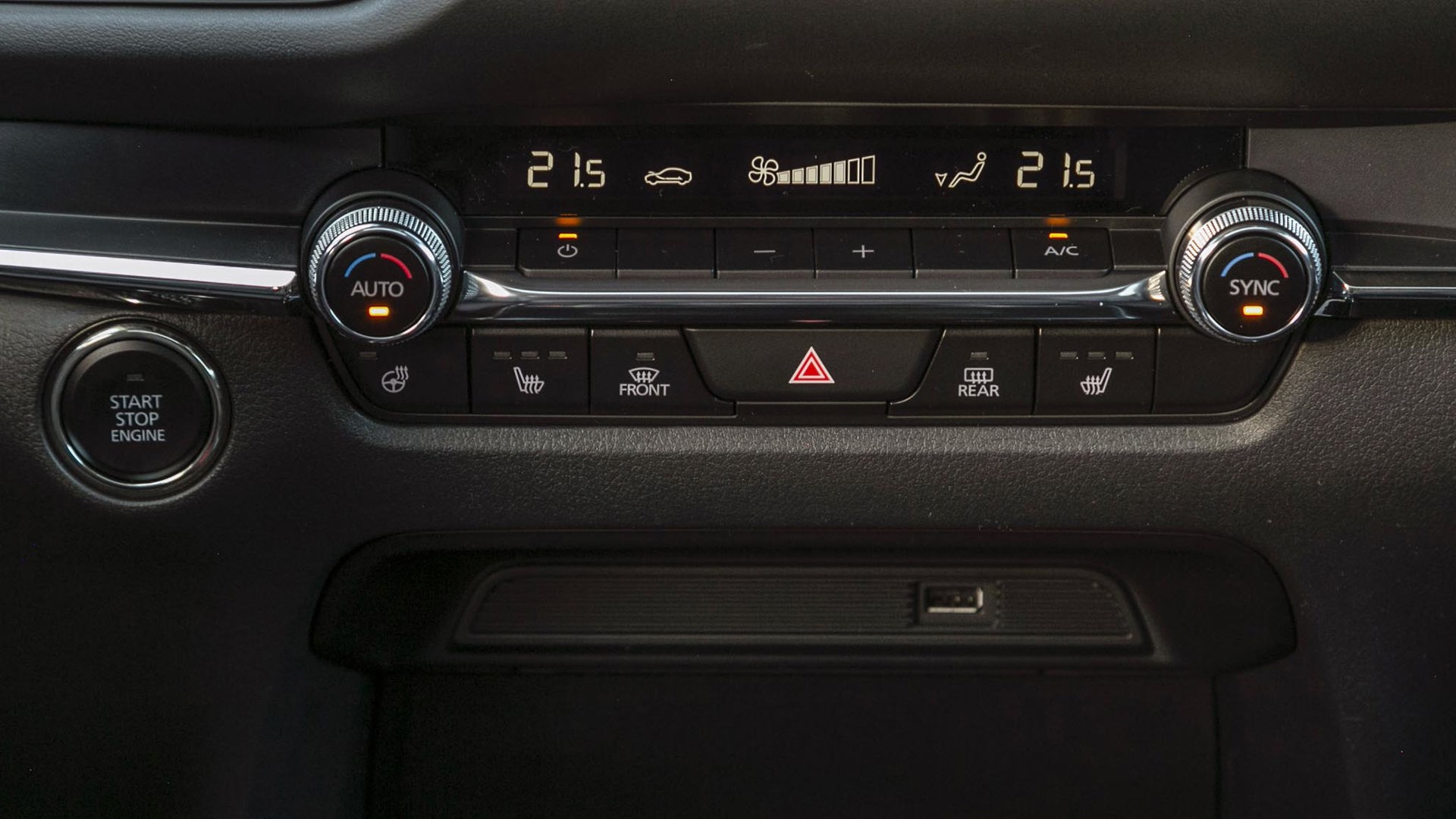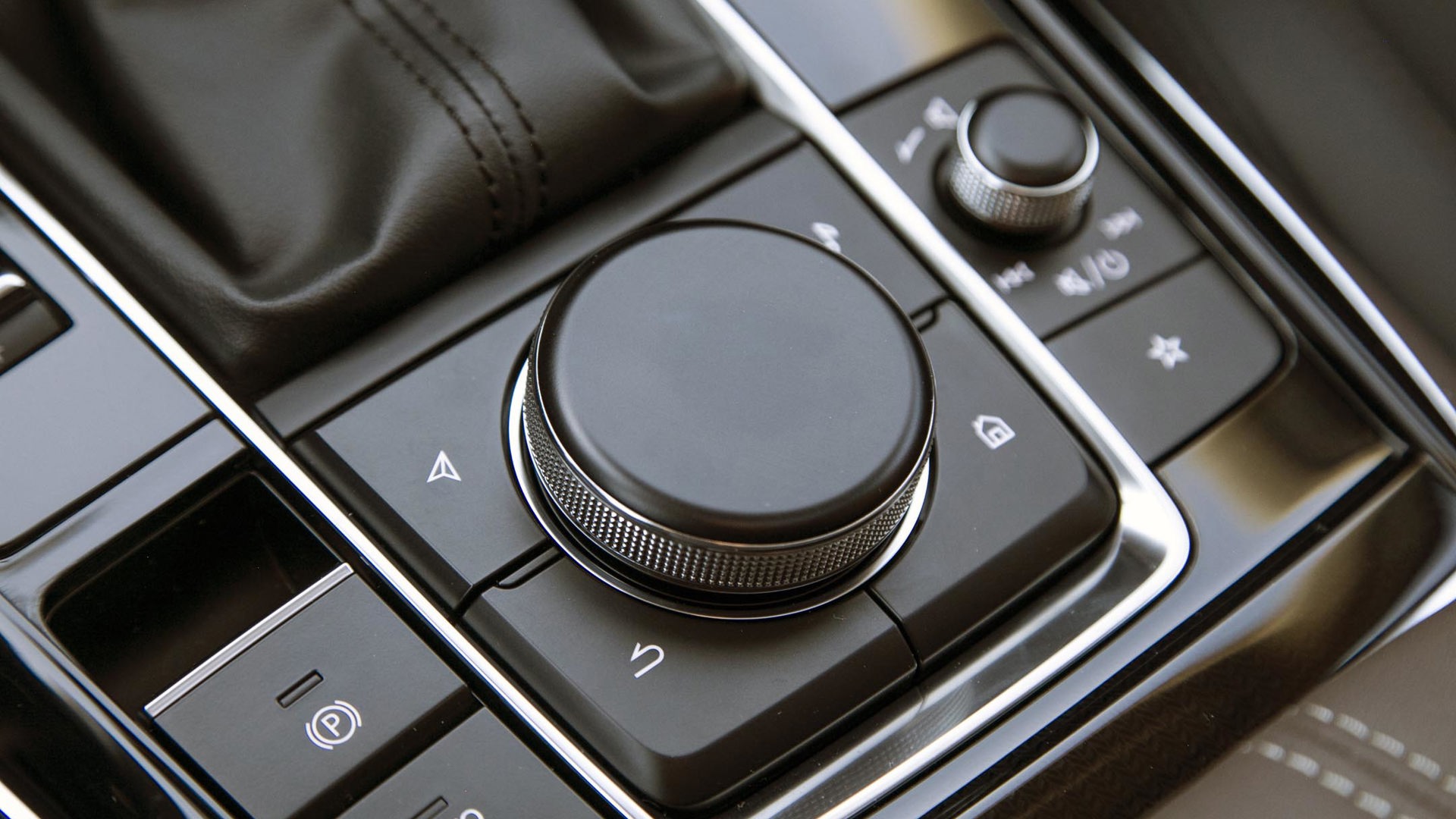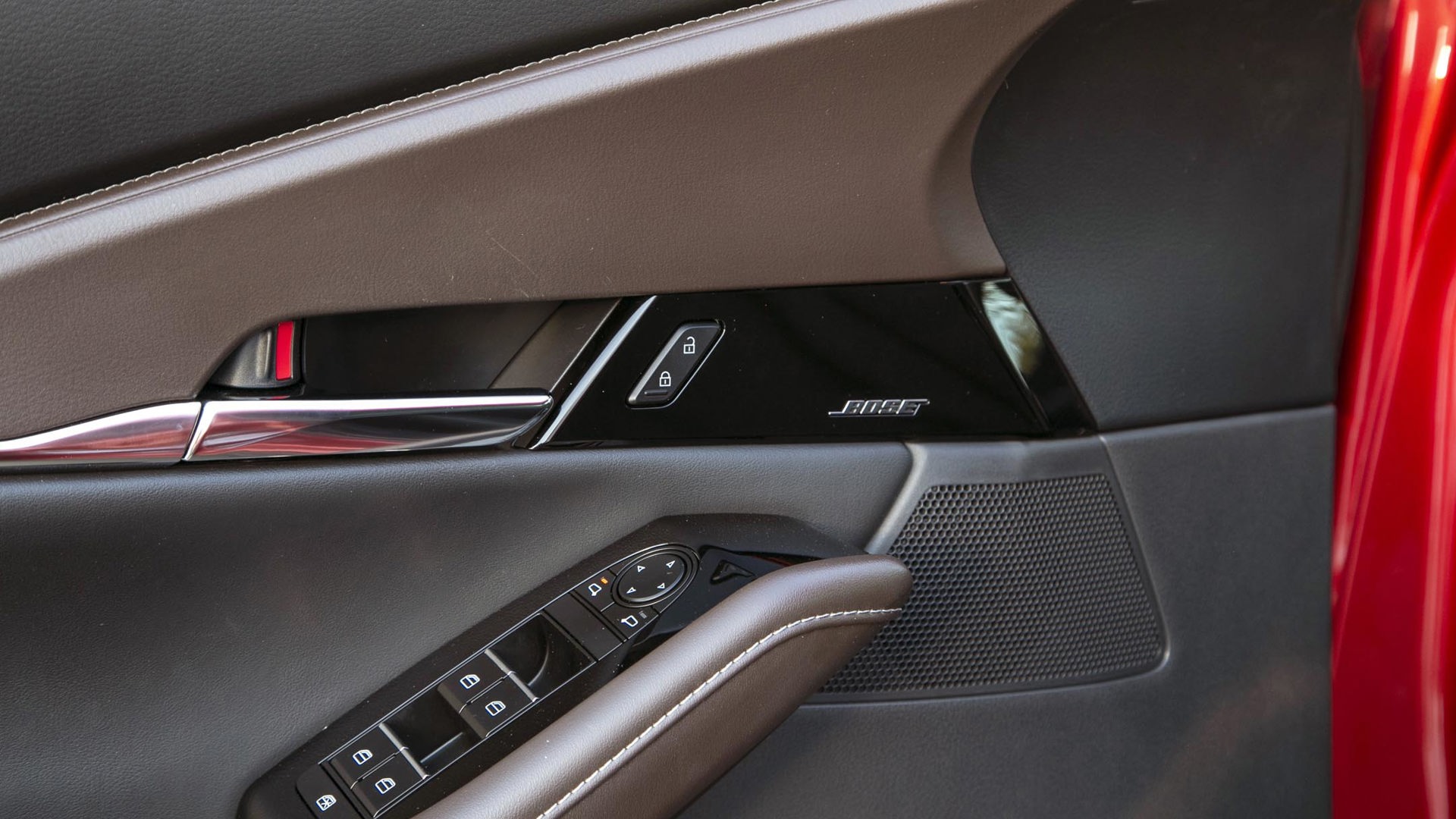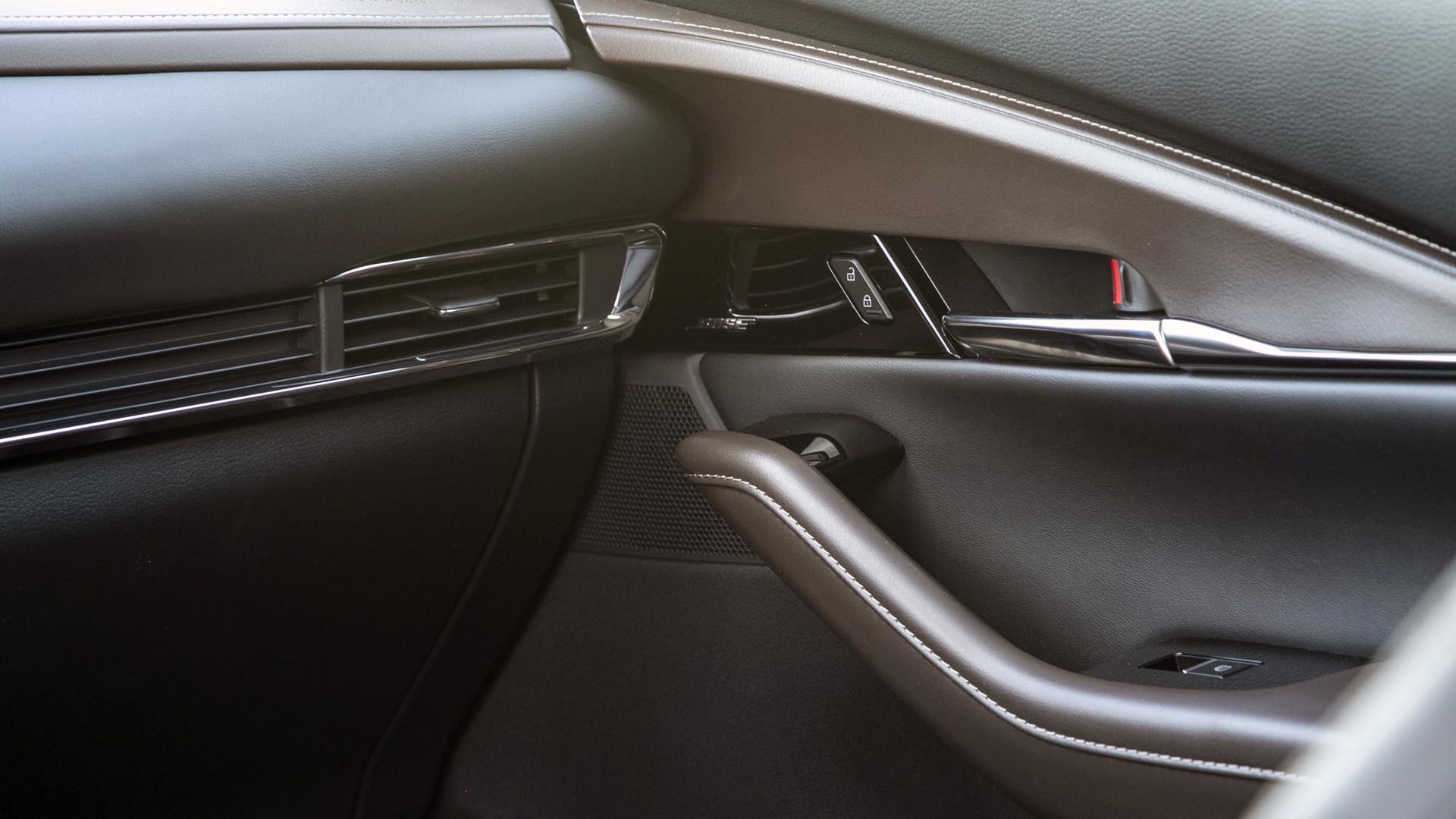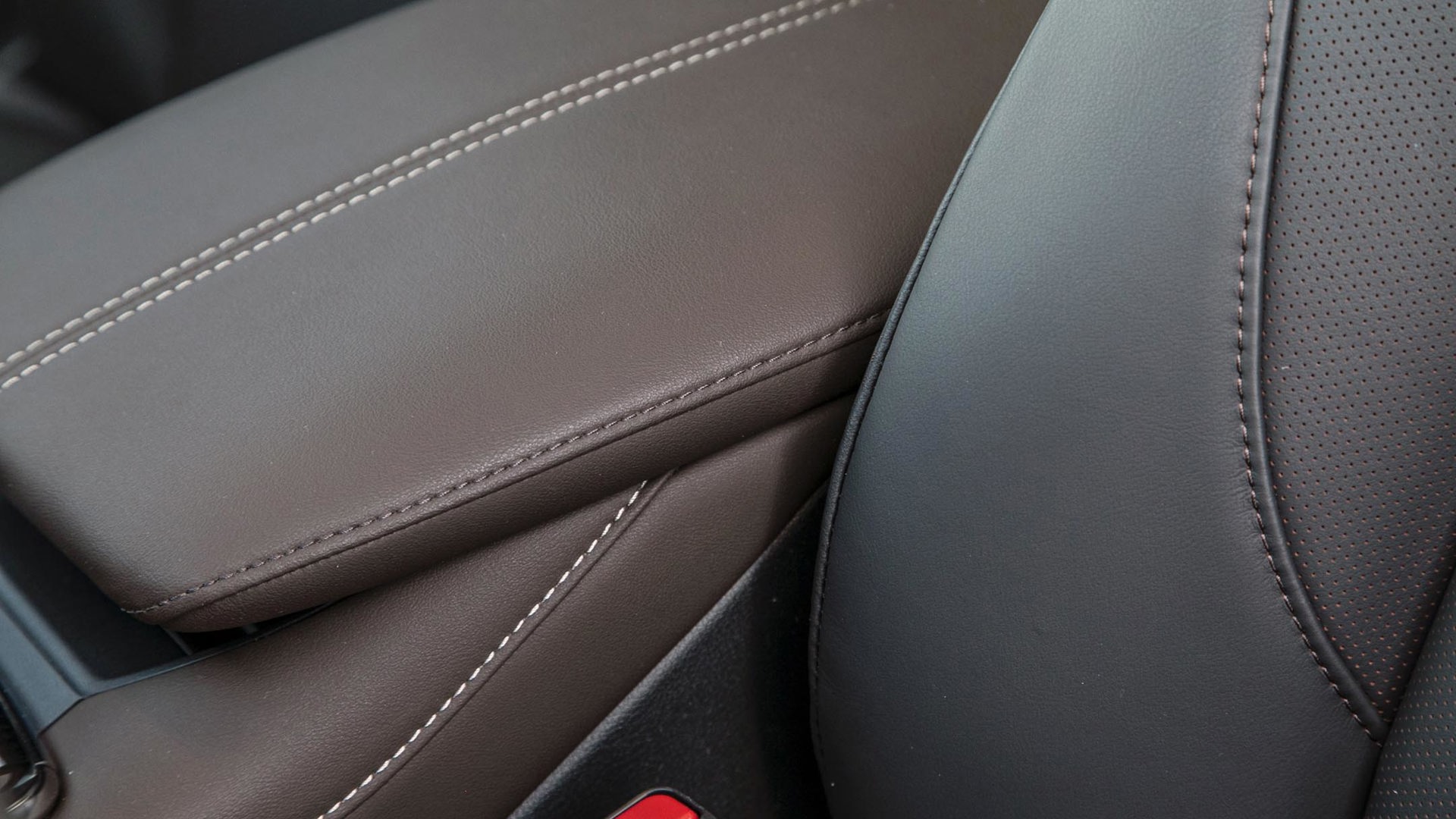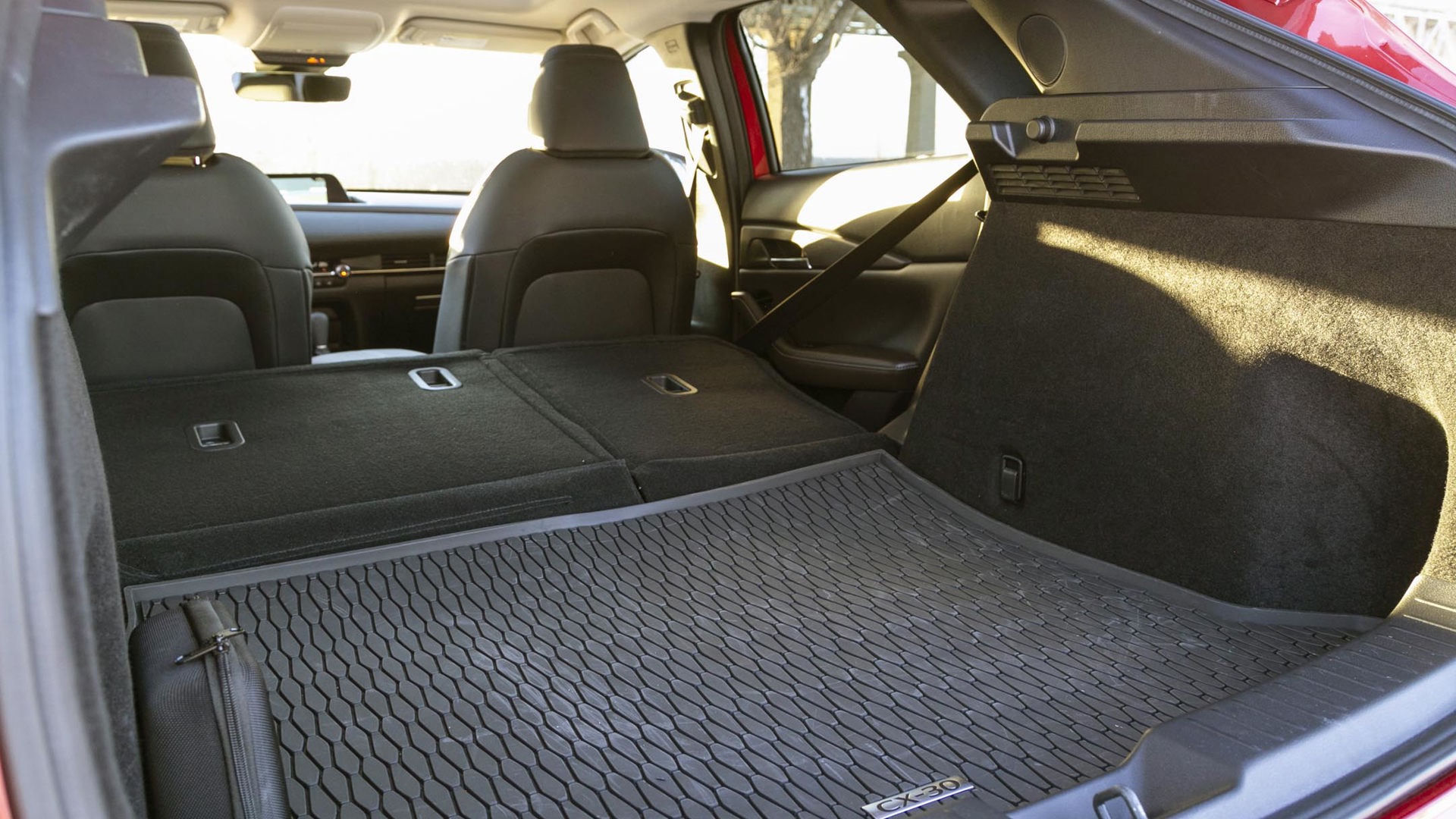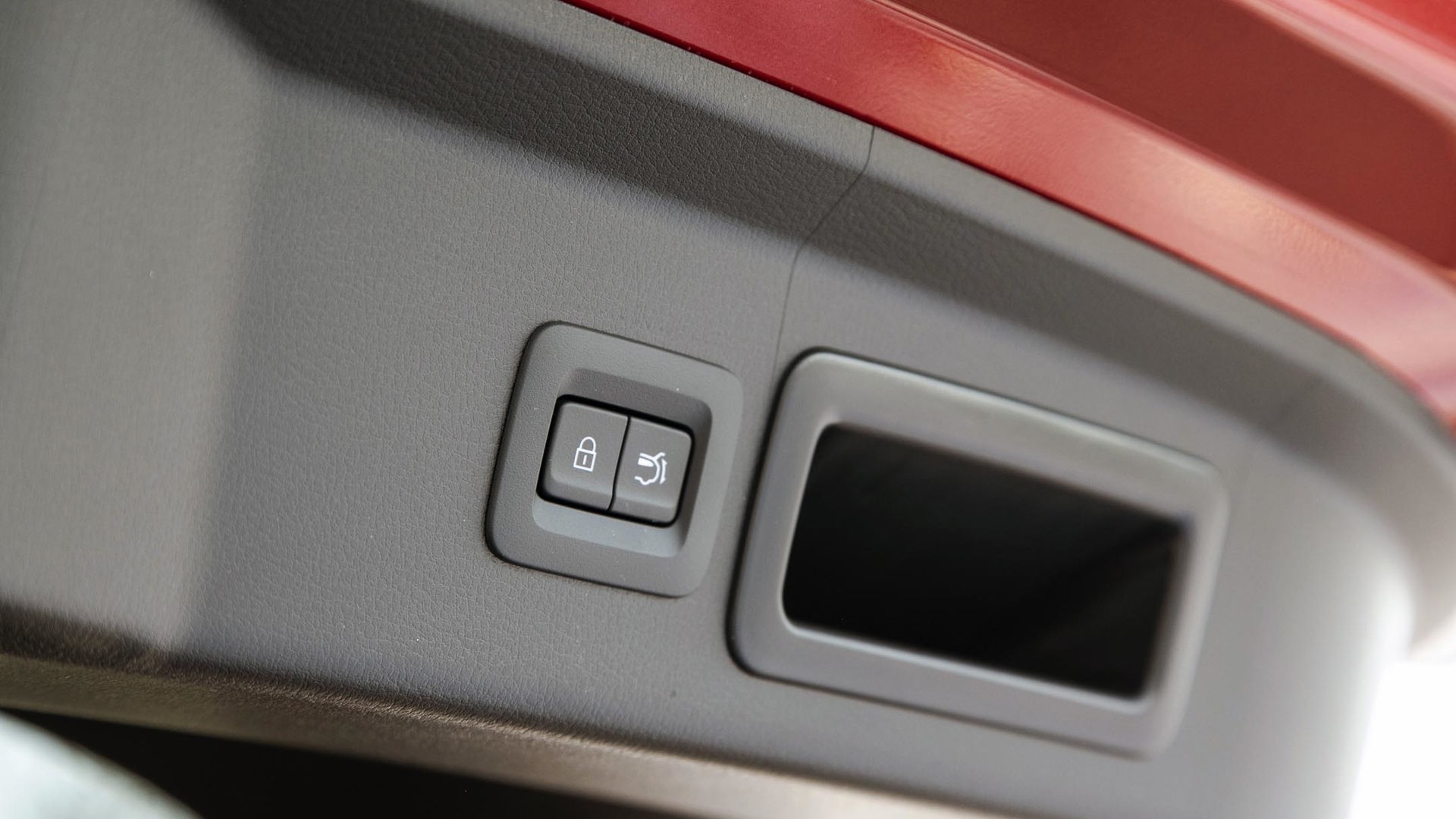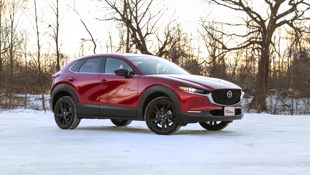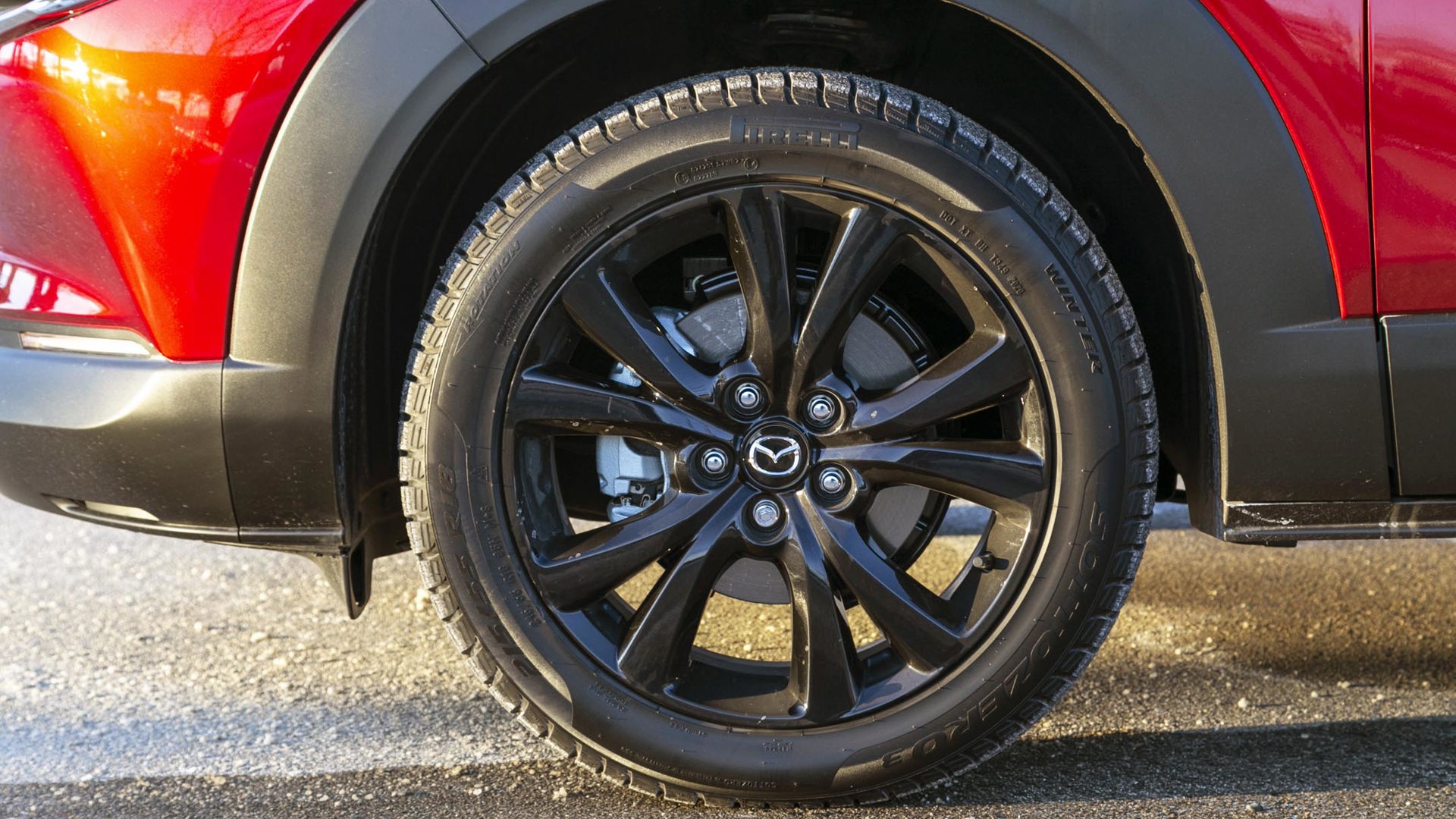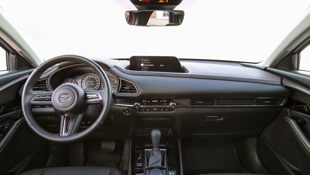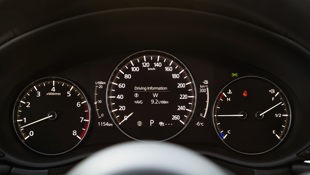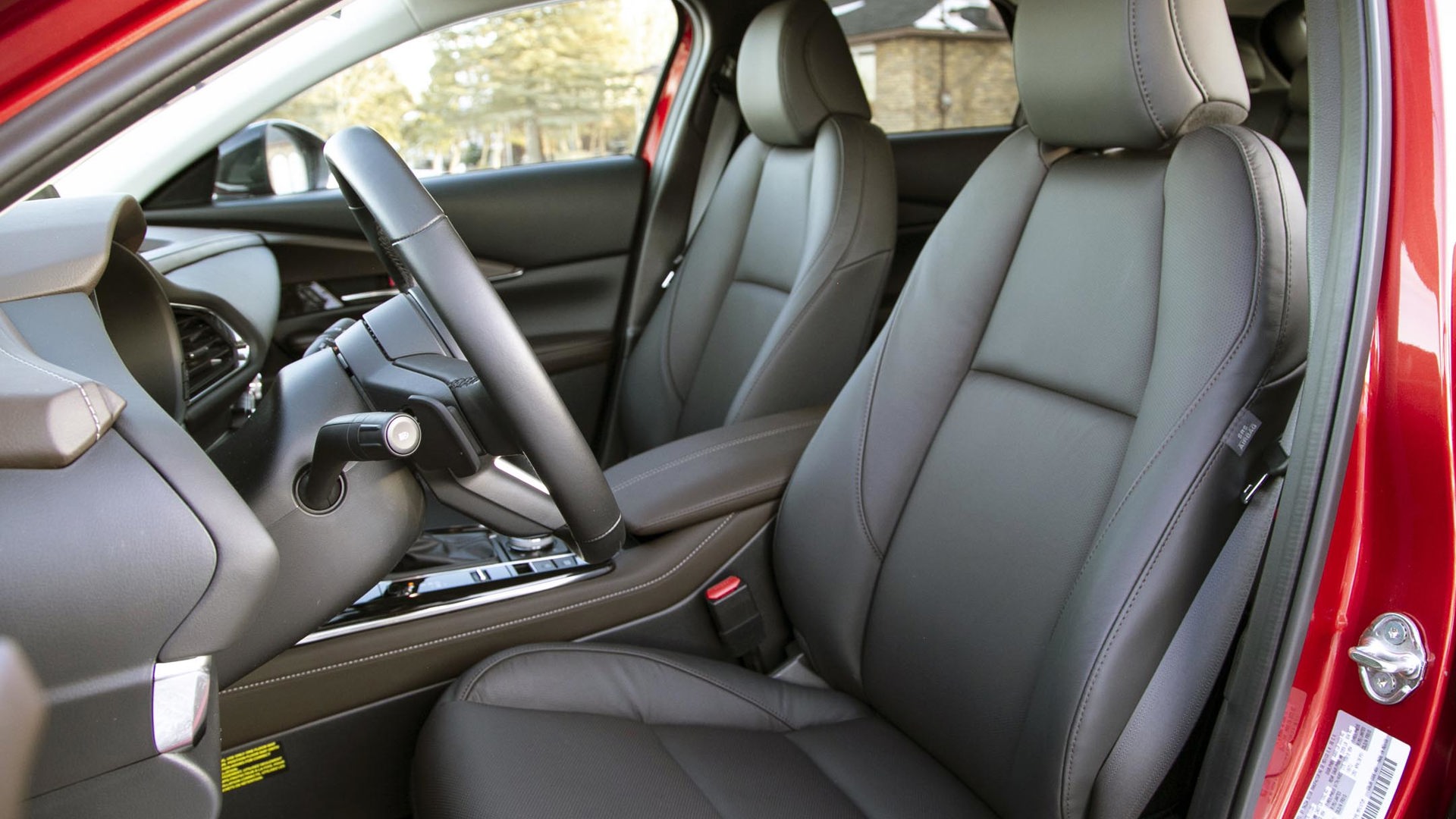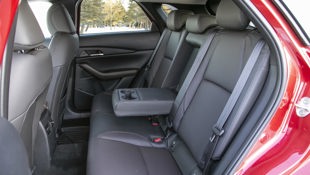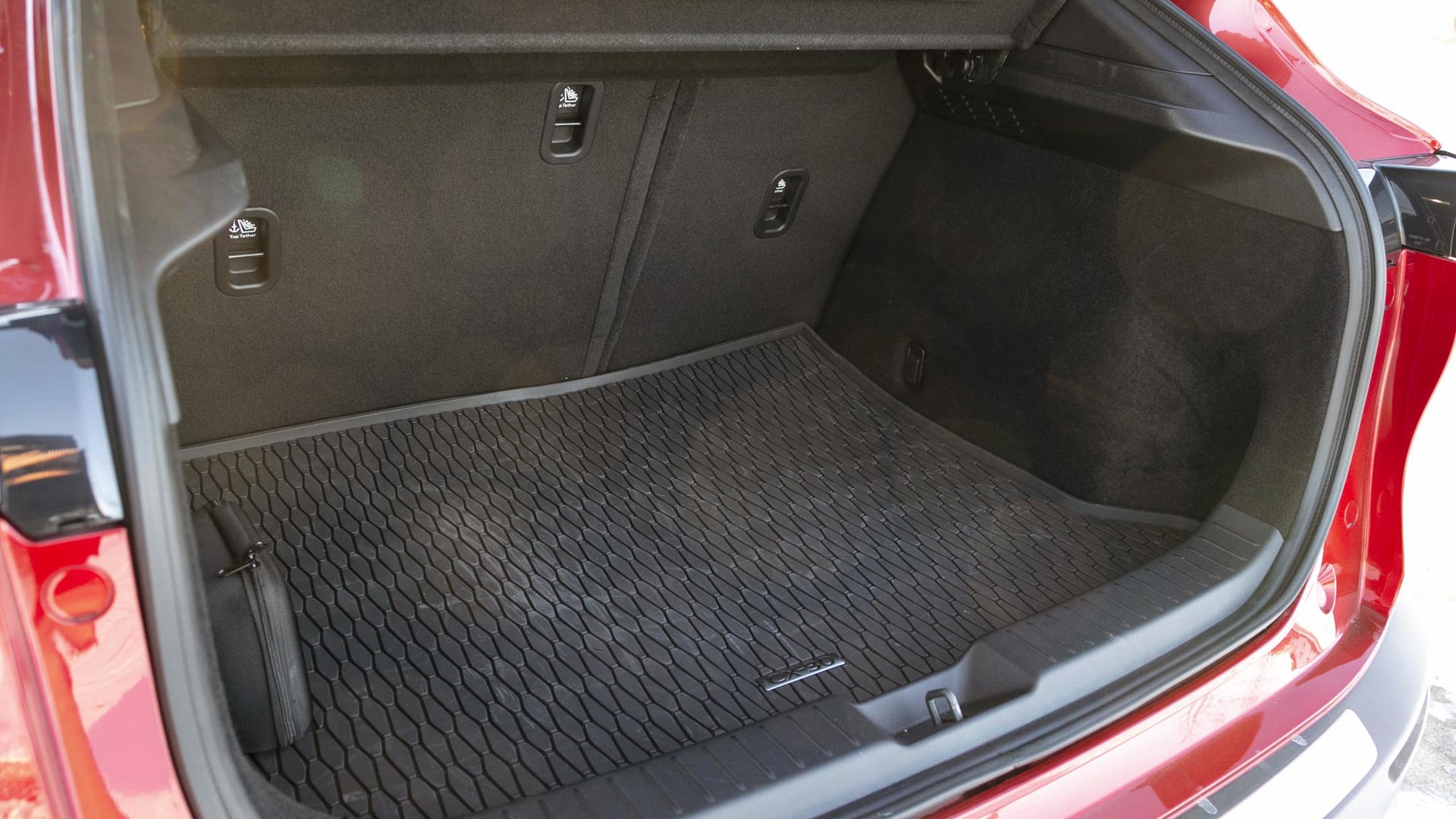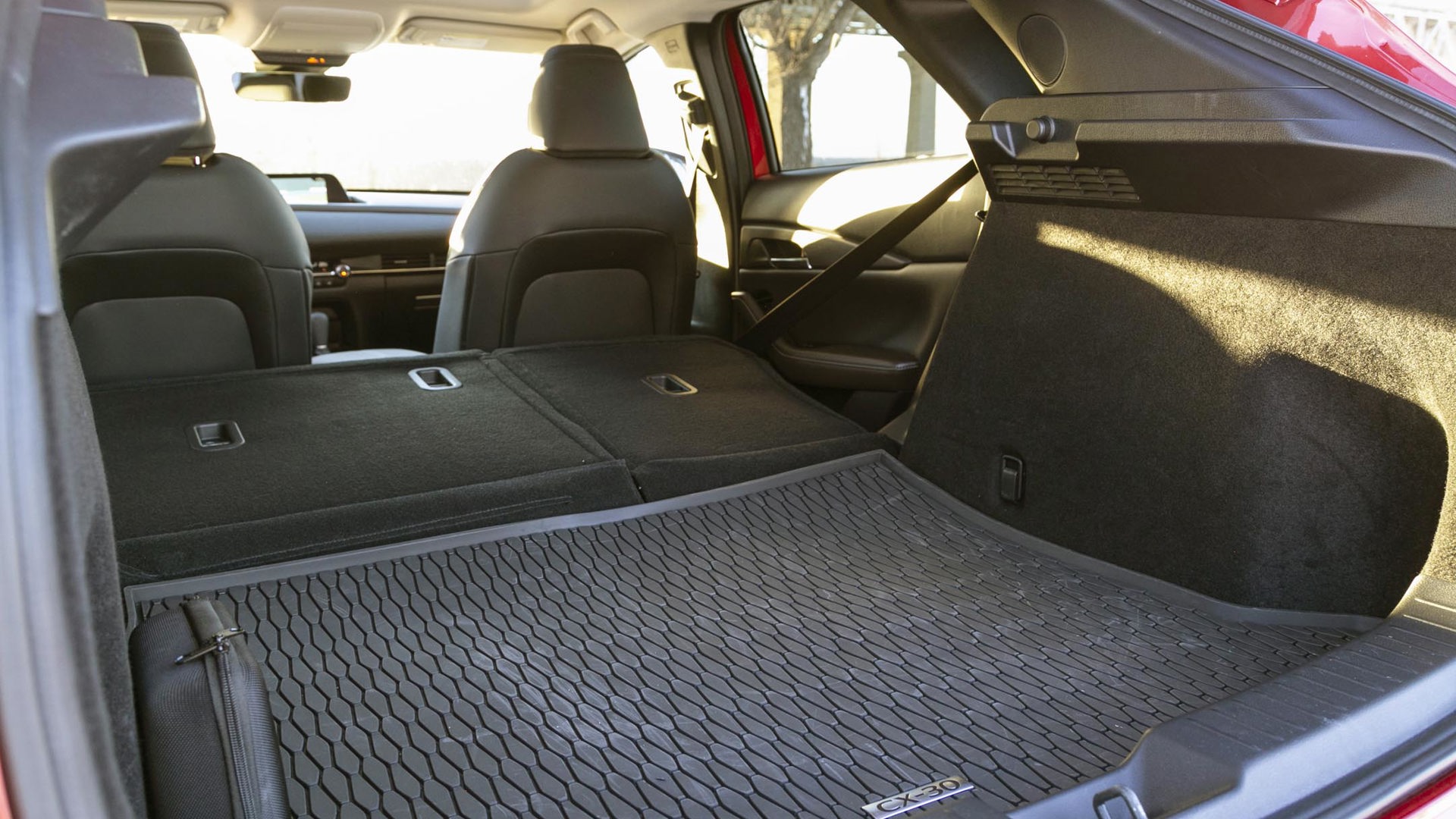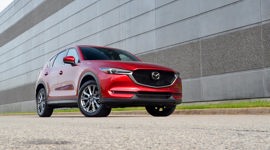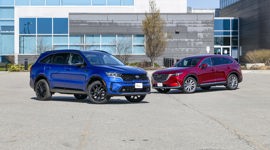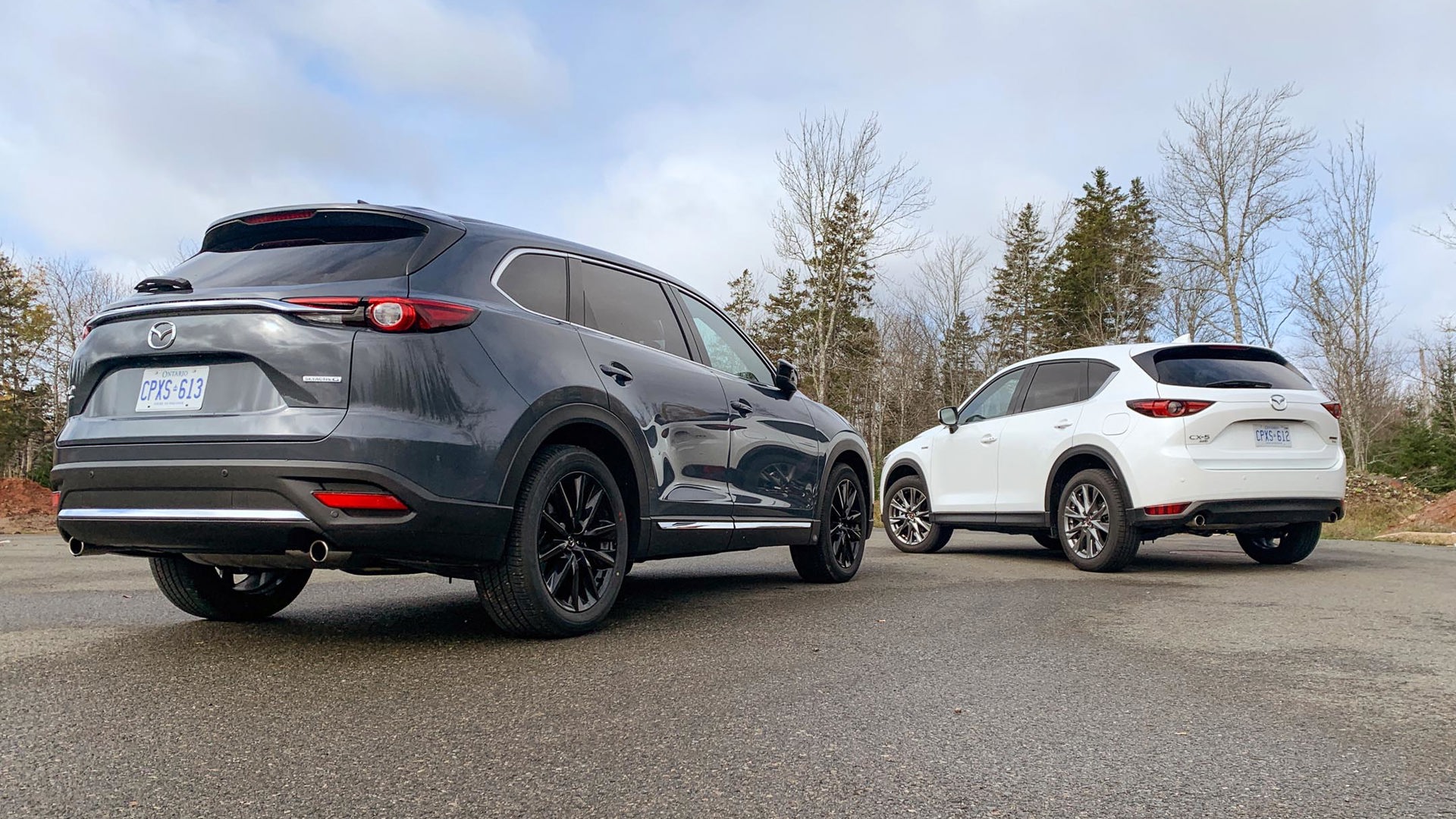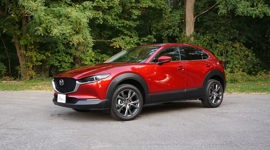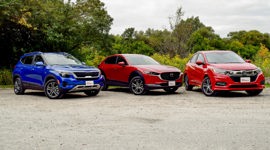 AutoTrader SCORE
AutoTrader SCORE
-
STYLING8/10
-
Safety9/10
-
PRACTICALITY7/10
-
USER-FRIENDLINESS7/10
-
FEATURES7/10
-
POWER9/10
-
COMFORT7/10
-
DRIVING FEEL9/10
-
FUEL ECONOMY7/10
-
VALUE8/10
Mazda has spent quite a few years differentiating its brand from other carmakers by promoting a more engaging drive experience, and it’s one that holds true across almost the entire lineup.
It’s not just marketing nonsense either, since most every model in recent memory manages to connect its driver with the road better than most of the mainstream competition. Lately, the brand’s been adding even more sizzle by using the old hot-rodder’s trick of stuffing a more powerful engine from a bigger machine into a smaller one. That means dropping the turbocharged motor that’s enough to power the three-row CX-9 into the 2021 Mazda CX-30 subcompact. The result is class-leading power added to what’s already one of the most entertaining entries in the segment.
Power: 9.5/10
Simply put, the CX-30 Turbo’s numbers of 250 hp and 320 lb-ft of torque are unmatched in this class. In fairness, that output is only achieved if the driver splashes out for pricey 93-octane fuel, but even running on regular the CX-30 Turbo still delivers a 310 lb-ft wallop (and 227 hp to boot).
When pulling away from a stop, the little Mazda has no trouble getting ahead of a lot of very sporty cars, and always has enough oomph available to squirt through holes in traffic. At highway speeds, passing is effortless as the CX-30 rides on an enormous wave of thrust to get around dawdling traffic. It’s the sort of sensation that becomes rather addictive and can certainly catch other drivers off guard who don’t expect the little suburban runabout to be as swift as it is.
Driving Feel: 9/10
A six-speed automatic is the only transmission found in any CX-30. The turbo model’s gearing is slightly taller than normally aspirated variants, and it seems a decent match for the engine. When not being driven aggressively, the shifts are smooth and generally unnoticeable, just as they should be, but are quite swift when called upon by the paddles, and the revs are held longer when sport mode is selected. With driving engagement a key factor in its lineup, Mazda has admirably avoided utilizing continuously variable transmissions (CVTs) with their thrill-sucking rubber-band feel.
Still, a gearbox with only six cogs is archaic these days, and a seven- or eight-speed would surely improve efficiency. Mazda claims more gears make for a less enjoyable driving experience, as even modest throttle requires a downshift or two. Realistically, the six-speed is more likely a result of the company not spending the resources to create a new transmission when this one admittedly does a decent enough job.
Compared to the Mazda3 Sport hatchback – a machine that shares its drivetrain and most dimensions with this SUV – the CX-30 is taller and slightly heavier, and as expected, the driver feels more body roll when cornering aggressively, and a little more nose dive when braking. But as far as crossovers go, the CX-30’s handling is well-controlled and its grip and composure inspires spirited driving when the opportunity allows.
Mazda’s use of a relatively low-tech torsion-beam rear suspension hasn’t hindered its road manners, but the sporty handling requires some stiff suspension tuning, and the CX-30’s ride is not as compliant as Subaru’s competitive Crosstrek model.
Styling: 8/10
Mazda’s designers have done an excellent job of creating not only a cohesive family resemblance across the full lineup, but have arguably made the best-looking automotive family out there. The CX-30’s body is formed to flaunt some interesting curves, especially when the light catches it just so.
Where the Mazda3 Sport has a sultry European look, the jacked-up CX-30 does have a bit of a tippy-toe profile, exacerbated by the oversized black plastic fender mouldings. And while I think the Soul Red paint seen here is among the most gorgeous colours ever offered, I’d probably choose my CX-30 in black just to help diminish the attention of those Tupperware flares.
Turbo models get black wheels and mirror caps, larger tailpipes, and, of course, a TURBO badge on the rump; but otherwise, they look just like any regular CX-30 model. Inside, the CX-30 Turbo is the same as the non-turbo models, and that’s mostly good. It’s a contemporary design with plenty of soft materials covering touchpoints, and, like the exterior, it’s a scheme that doesn’t follow whimsical trends and should look smart for years to come.
Nitpicking, the abundance of glossy black trim becomes quickly covered in smudges and scratches, generally only looking good in a brochure, and the very dark chocolate brown trim bits seem an odd choice against the black leather since it offers very little contrast.
Features: 7/10
You can’t order a higher-spec CX-30 than this Turbo tester, and while it possesses most of the essentials expected like leather seats, a premium audio system, a sunroof, and heated seats and steering wheel, there are a few key features that either fall short in execution or are missing altogether. The audio system, for instance, offers mediocre sound, lacking both the power and clarity offered by some competitor systems. There are no ventilated seats offered, nor a panoramic sunroof or even fog lights. That last item is largely offset by the CX-30’s excellent adaptive LED headlights, however.
The CX-30 also lacks some of the modern technology that’s expected nowadays. There’s no wireless charging pad offered, nor is there a remote start option available. The latter has become increasingly common amongst competitors who offer smartphone apps that enable an owner to check on their car’s status, whereabouts, service schedule, or even pre-condition the temperature before even getting in the car, but Mazda has no such interface yet.
User Friendliness: 7/10
The CX-30’s tech missteps are also evident with the infotainment system. While the placement of a volume knob on the space between the seats is something one gets used to, using the system’s rotary controller for radio tuning is a multi-step and tedious affair. Worse still, the system offers no touchscreen functionality, which isn’t such a big deal cycling through Mazda’s own menus, but it’s counterintuitive and cumbersome for Apple CarPlay and Android Auto applications, both of which are at least standard equipment. Drivers will also want to commit the silver steering wheel buttons to memory since they’re virtually illegible in sunlight.
The downside to the CX-30’s sassy styling is the impact it has on outward vision, with both the view out the back and over the shoulder hampered by small windows and thick pillars. Ergonomic gaffes aside, the CX-30’s cockpit presents an excellent driving position with a highly adjustable seat that offers plenty of bolstering. The steering wheel’s small diameter and thick rim make it feel like it had just been transplanted from a sports car.
Comfort: 7/10
While bear-sized Road Test Editor Dan Ilika found the CX-30’s seats and space uncomfortably snug, I found them decently comfortable for my 5-foot-9 frame and the interior dimensions entirely reasonable for the class. The back seat surprised me with more headroom than is offered in key competitors like the Crosstrek or Chevrolet Trailblazer, and while legroom is a bit shorter, it’s not far off and there was still reasonable space for me to sit behind the front seat positioned for my needs.
The dual-zone climate control warmed up quickly and, when left on its auto setting, didn’t need to be fiddled with again during my entire test. Plus, the heated seats and steering wheel did a great job of keeping me toasty despite the frigid conditions. Rear-seat occupants aren’t so lucky, with no heating elements offered for their buns – though there are HVAC vents on the back of the centre console, which is rare in the segment.
Practicality: 7/10
The CX-30 offers more functionality than tiny competitors like Toyota’s C-HR or the Hyundai Kona, but not much. When measured against others in its class, the Mazda’s cargo-carrying capability comes up short. There’s a decent 572 L of space available with the rear seats upright, but it’s a narrow hold, which limits its functionality. With the rear seats folded flat, the available space expands to 1,280 L, but even that’s a few hundred litres short of the Honda HR-V or Kia Seltos, or the Crosstrek. Curiously, it’s even smaller than the Mazda3 hatchback’s maximum cargo volume.
As if to reinforce Mazda’s emphasis on style and sportiness over functionality, the CX-30 comes with no roof rails, a feature most of the competitors offer as standard equipment.
While Mazda fully admits the CX-30 isn’t a true off-road machine, it nevertheless fitted the CX-30 with a trail-tackling drive mode system as part of the standard all-wheel drive included here. When engaged, the centre coupling is locked and torque is maximized for the rear wheels, diverting more torque toward the front as the vehicle begins moving. It’s meant to maximize traction and momentum, especially on uneven surfaces where one of the wheels is off the ground. Even without this feature selected, Mazda’s all-wheel drive system worked exceptionally well, apportioning output where it was best utilized when I experimented in some snowy and icy conditions.
Fuel Economy: 7/10
All the CX-30’s turbocharged power comes with a small premium at the gas pump. Average city consumption ratings of 10.5 L/100 km are at least 1.0 L/100 km higher than nearly all of the competitors. On the highway, the CX-30 should achieve 7.9 L/100 km, and a combined average of 9.3, which are both a bit more competitive than the city rating, but the old adage that you’ve gotta pay to play certainly applies here. The CX-30’s 48-L fuel tank is also quite small, making for frequent fill-ups and a disappointing lack of range.
Safety: 9/10
The CX-30 GT is a very safe vehicle, according to authorities in the know. It has earned both a Top Safety Pick from the Insurance Institute for Highway Safety (IIHS), and a five-star rating from the United States National Highway Traffic Safety Administration (NHTSA). In GT trim, there’s a generous helping of standard active safety features including adaptive cruise control that works in stop-and-go traffic, collision avoidance autonomous braking front and rear, lane-keeping assist, high-beam control, and traffic-sign recognition. Mazda has also fitted the GT models with rear parking sensors, and a driver-attention alert system, too.
Value: 8/10
Evaluating this version of the CX-30 strictly on its size or feature count won’t allow a clear appreciation for the value it provides, given a top-trim Kia Seltos or Subaru Crosstrek offers more kit for thousands less. The turbo option adds $2,400 to the CX-30 GT’s sticker price, making it one of the costliest in its category. But the CX-30 Turbo’s drivetrain puts it into a class of one without any direct competitors that come anywhere near its power output. When compared to entry-level offerings from premium German brands like BMW, Audi, and Mercedes-Benz, the CX-30 offers comparable style and on-road comportment for several thousand dollars less, reinforcing its relative value.
The Verdict
Buyers in the compact category have plenty of choice with several great options available. While neither the most luxurious nor the most rugged, Mazda’s CX-30 Turbo is comfortably the segment’s top choice for driving enthusiasts.
| Engine Displacement | 2.5L |
|---|---|
| Engine Cylinders | Turbo I4 |
| Peak Horsepower | 250 hp @ 5,000 rpm (93 octane); 227 hp @ 5,000 rpm (87 octane) |
| Peak Torque | 320 lb-ft @ 2,500 rpm (93 octane); 310 lb-ft @ 2,000 rpm (87 octane) |
| Fuel Economy | 10.5 / 9.3 / 7.9 L/100 km cty/hwy/cmb |
| Cargo Space | 572 / 1,280 L seats down |
| Model Tested | 2021 Mazda CX-30 GT Turbo |
| Base Price | $36,250 |
| A/C Tax | $100 |
| Destination Fee | $1,950 |
| Price as Tested | $38,750 |
|
Optional Equipment
$450 – Soul Red Crystal Metallic paint
|
|
